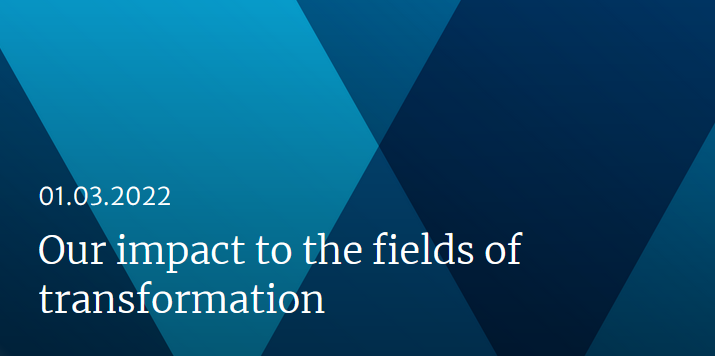Dear Partnership Members, Ladies and Gentlemen,
The textile and garment industry is operating in an environment that has been changing rapidly in the past year, too. It is becoming increasingly clear that COVID-19 was and is a major trend accelerator. Another key element of this environment is the regulatory framework, which has been significantly changed by the passing of the German Act on Corporate Due Diligence Obligations in Supply Chains. And of course, we all followed the Bundestag election with great excitement.
Soon after the government was formed, both the Federal Ministry for Economic Cooperation and Development (BMZ) under the new leadership of Federal Minister Svenja Schulze as well as the other ministries represented in the Steering Committee, Environment (BMUV) and Labour and Social Affairs (BMAS), made it clear that they continue to consider the multi-stakeholder approach to implementing due diligence embodied by the Textiles Partnership as an important element for change and therefore want to continue to promote it in the coming years. This is both good news and an incentive for the Partnership and its members.
With this in mind, I would like to highlight three points from the Partnership’s diverse work over the past year:
The new Review Process was both a great challenge and an opportunity for our members and the Partnership Secretariat. A challenge in regard to the effort involved. And an opportunity, because for the first time the members were able to consistently apply the due diligence logic and anchor it in their sustainability management. The reports published on the PST website show that the Partnership companies have basically internalised and implemented the due diligence approach. However, they also show existing gaps and opportunities for improvement in the implementation of their individual responsibility.
In the Textiles Partnership, we have been aware of the great importance and leverage effect of responsible business and purchasing practices not only since COVID-19. With the annual topic we highlighted purchasing in 2021. To this end, we have joined forces with other multi-stakeholder initiatives to develop the “Common Framework for Responsible Purchasing Practices”. This is intended to serve as a reference document for assessing and improving purchasing practices in the future.
There is also a lot of movement in our Partnership Initiatives (PI): In May, the PI on complaints mechanisms was launched with a cooperation project with the Fair Wear Foundation and the Dutch Agreement on Sustainable Garments and Textile. The aim is to provide workers in Vietnam and India with better access to grievance mechanisms and remedy. In the course of the year, we were able to expand our engagement in this central element of the due diligence approach with cooperation projects in Pakistan and Turkey. In addition, we prepared a PI to promote the availability of sustainable and organic cotton, for which a pilot project is already being implemented. We continued the PI on wastewater and launched the second project phase of the PI in Tamil Nadu and on living wages.
On the basis of this solid work programme, the differentiated feedback from the members on the Review Process and against the background of the changing environment, the Steering Committee has initiated the discussion on the future direction of the PST. A number of further developments are emerging which, among other things, aim for even better international coherence of the Partnership’s activities, attach significantly greater importance to our collective engagement, enable a stronger focus on specific, central sector risks and processes, and take into account the evolving legal framework of human rights and environmental due diligence obligations. Decisions on this are due in the second half of 2022.
Now and in the future, the membership in the Textiles Partnership demands effort. We are convinced and are working to ensure that this effort is worth it, that it improves working and environmental conditions in the industry and especially in the production countries, and that you as a member can also better achieve your own sustainability goals. Therefore, use your membership in the PST as an opportunity to tackle challenges individually and together and thus gradually achieve fair working conditions and production within planetary boundaries.
In this annual report, you will find detailed information on all the topics and projects that I have only been able to touch on here and on many more. We wish you a pleasant read and look forward to continuing our trustful cooperation in the Partnership for Sustainable Textiles.
For the Partnership Secretariat
Jürgen Janssen


Copyright: BPA/Steffen Kugler
Dear Partnership members, dear readers,
the Partnership for Sustainable Textiles is working for better social and ecological conditions in global textile production for seven years now. Despite the pandemic and the structural challenges in the value chain, important progress was made again last year.
The Textiles Partnership makes an important contribution to highly relevant issues that I would like to advance together with you as priorities of German development policy in the coming years. As Federal Minister for Economic Cooperation and Development, I am therefore very pleased to support the PST:
Especially in a sector where the majority of the workforce is female, it is important to focus on the needs of women and girls and to take targeted action against abuses and discrimination. In the expert group on gender-based violence, you already exchange information on possible actions and best practices. The Textiles Partnership offers a platform that makes mutual support and knowledge exchange possible.
Work does not always protect against hunger and poverty – but a living wage does. I therefore very much welcome the fact that Partnership members are joining forces in the Living Wage Lab to develop scalable strategies towards living wages. Ultimately, all stakeholders need to work together to create sustainable, structural change.
The climate crisis hits the poorest countries hardest, including many textile-producing countries. Small adjustments alone will not adequately address this global problem. It requires a fundamental rethink. In the Textiles Partnership, you are intensively dealing with alternative business models and a circular textile economy. That is a first important step!
Together, the Partnership for Sustainable Textiles covers almost half of the German textile retail market. This brings with it great responsibility. But also, the opportunity to set important impulses and to show the industry the way towards a sustainable, social and sustainable textile economy.
Much has changed since the Partnership was founded in 2014. With the Supply Chain Due Diligence Act, companies have to fulfil due diligence obligations for the first time. The recently published legislative proposal of the European Commission even goes beyond this in its requirements and enables major progress in terms of development policy.
This will give the Textiles Partnership additional significance. On the one hand, multi-stakeholder initiatives – as also described in the European Commission’s proposal – can support the implementation of mandatory requirements. On the other hand, the PST remains a pioneer initiative that goes beyond legal minimum requirements. It can set accents in particular where a law needs to be supplemented.
As an ambitious initiative, the Textiles Partnership is continuously developing. And you all help to shape this development, contribute your expertise, and engage in exchange with each other.
I would therefore like to thank you very much for your important commitment and am pleased about the good cooperation!
Svenja Schulze
Federal Minister for Economic Cooperation and Development
Overview Chapter 3
2021 in Numbers
In 2021, we gained 15 new members. At the end of December 2021, the Textiles Partnership had 122 members.
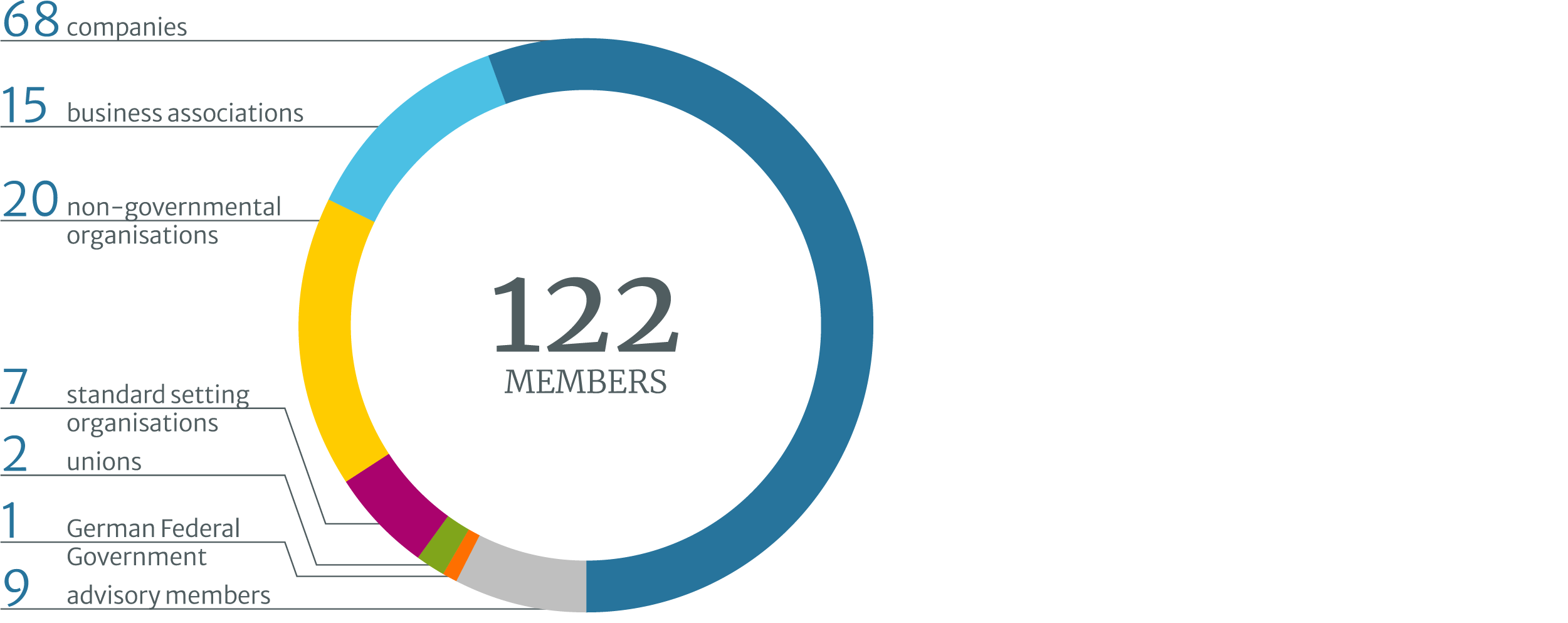
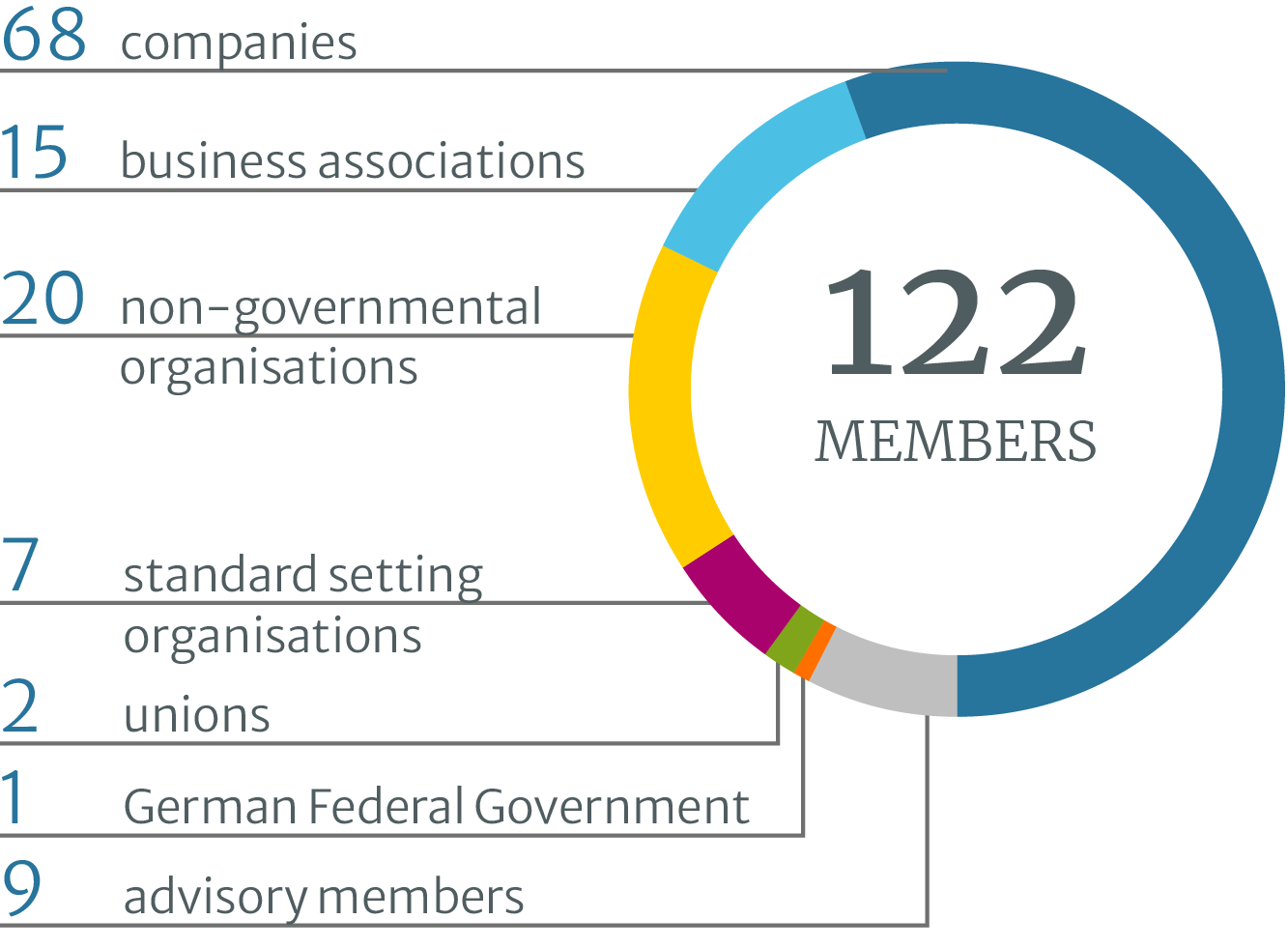
104 members participated in the Review Process
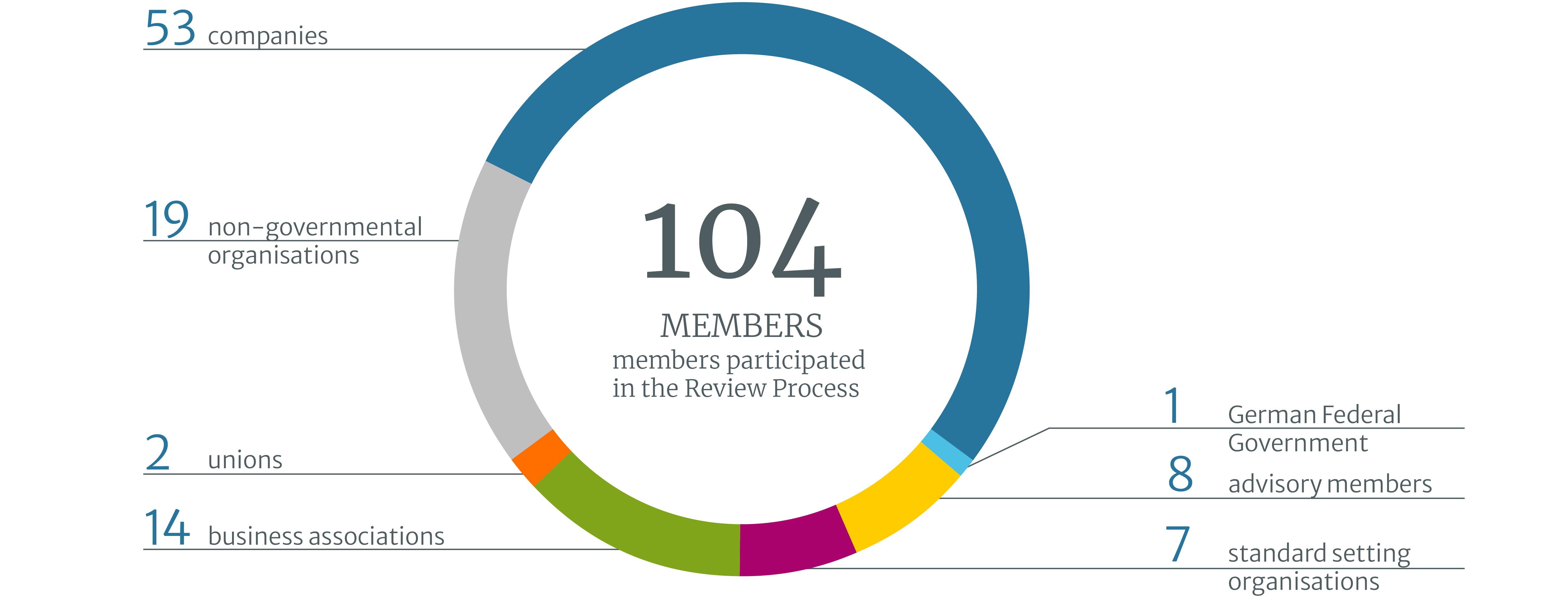
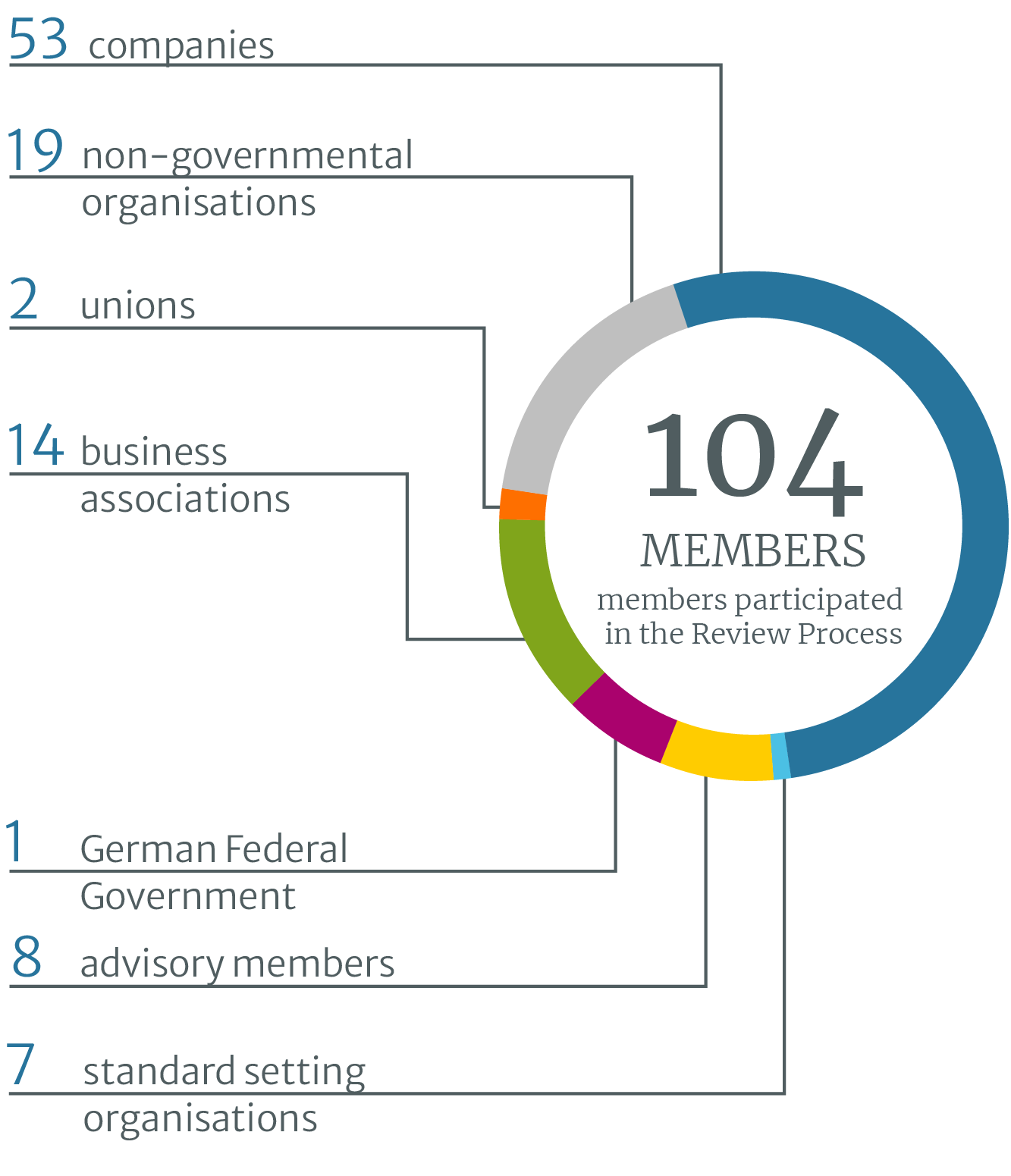
Progress
Any company that has set targets in the previous Review Process will report on progress towards those goals. Progress reporting follows the “comply-or-explain” principle. If a company has not achieved a goal, it must explain to what extent it deviated from the goal, what the reason was, and what it did to achieve the goal.
In the 2019 Review Process, the members have set themselves 515 goals. They have achieved 405 of these by the 2021 Review Process.
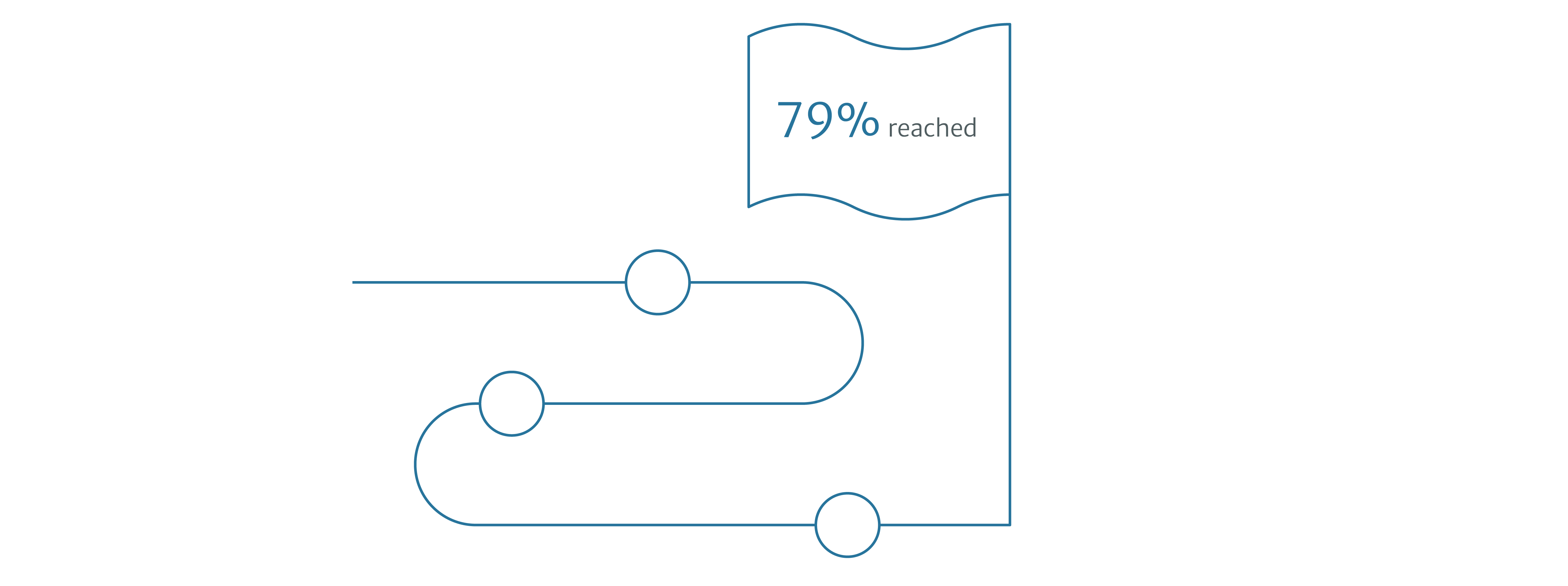
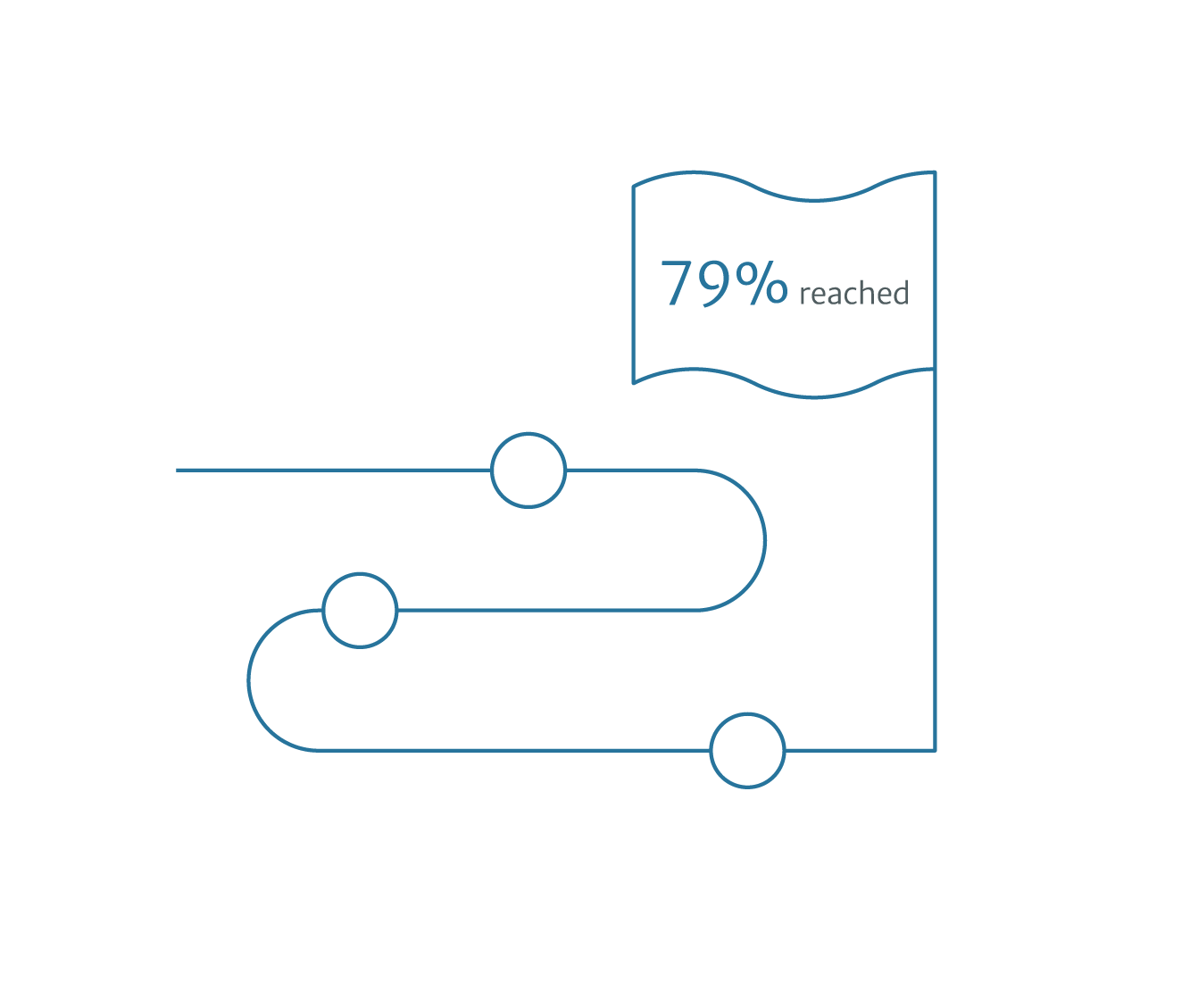
New goals in the 2021 Review Process
The core of the reporting is the risk analysis and risk prioritization along eleven social, ecological and corruption risks. On this basis, PST member companies derive goals to prevent potential risks and mitigate actual negative effects.
In the Review Process, the member companies have set themselves 871 targets for the 11 sector risks.
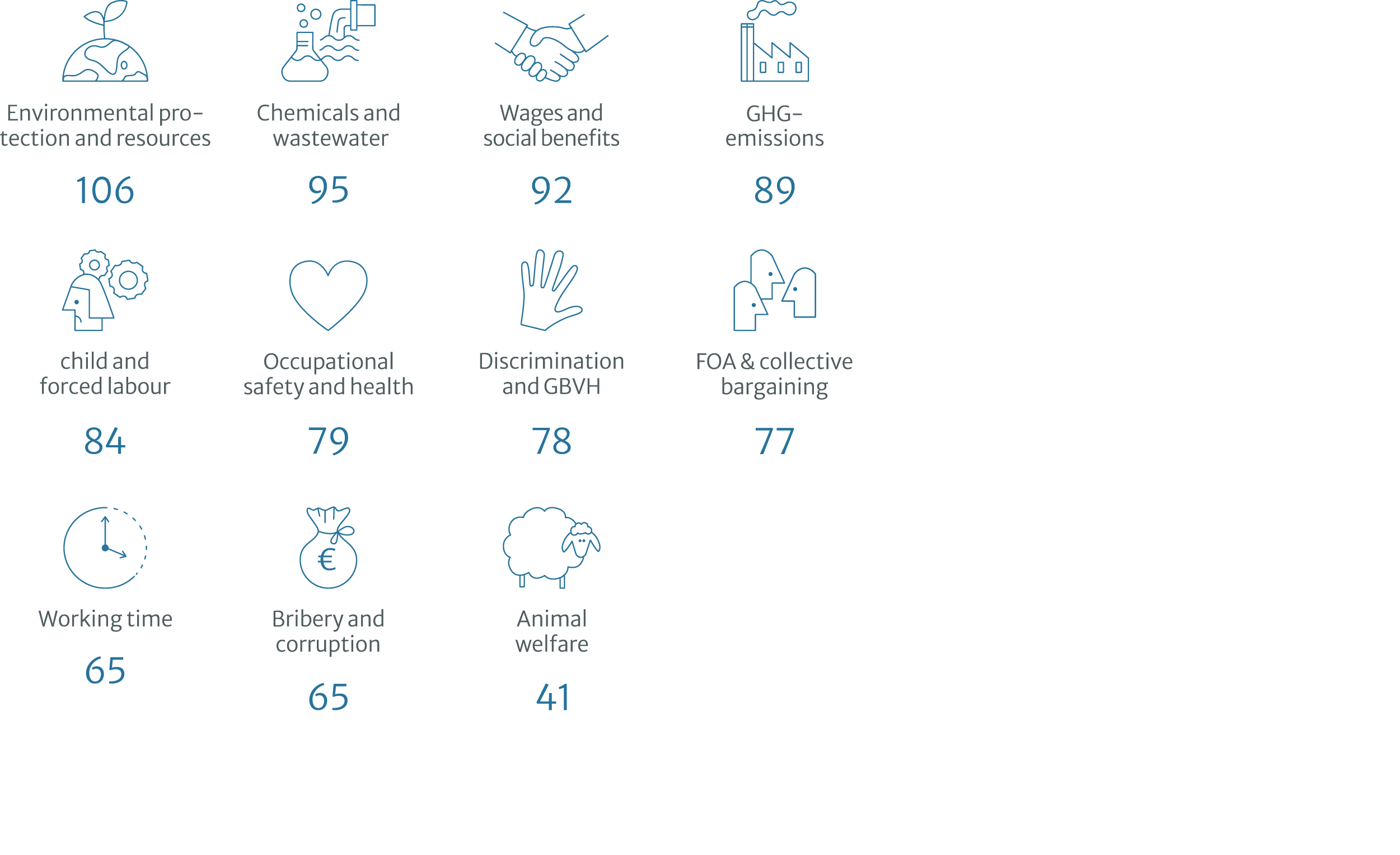
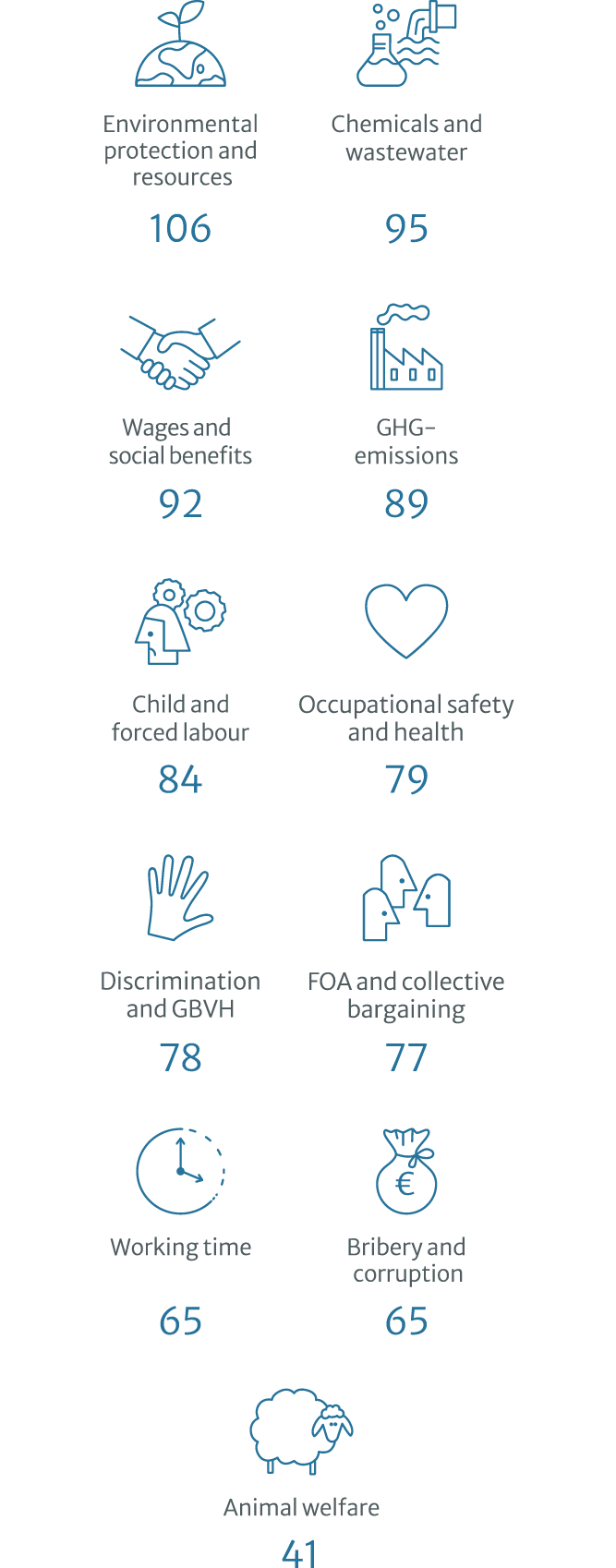
Note: Only the goals of the members who were able to publish their report by March 2022 are taken into account here. Since individual companies are in the mediation process, the figures can still change.
Joint goal on sustainable cotton
Since 2018, every cotton-procuring Partnership member has been obliged to set an individual increase goal for sustainable cotton in the Review Process. In the progress report of the subsequent Review Process, the member explains whether or to what extent it has achieved the goal. The growth target is an individual goal set every two years to increase the proportion of organic cotton and/or otherwise sustainable cotton.
The Partnership companies are only a few steps away from the joint cotton target. By 2025, the share of sustainable cotton is to be increased to a total of 70 percent and the proportion of organic cotton contained in it to 20 percent. In the 2021 Review Process, the Partnership companies stated that they procured 971,471 tons of cotton, of which 14.7 percent were organic cotton or in-conversion and 50.4 percent cotton from other sources recognized as sustainable.
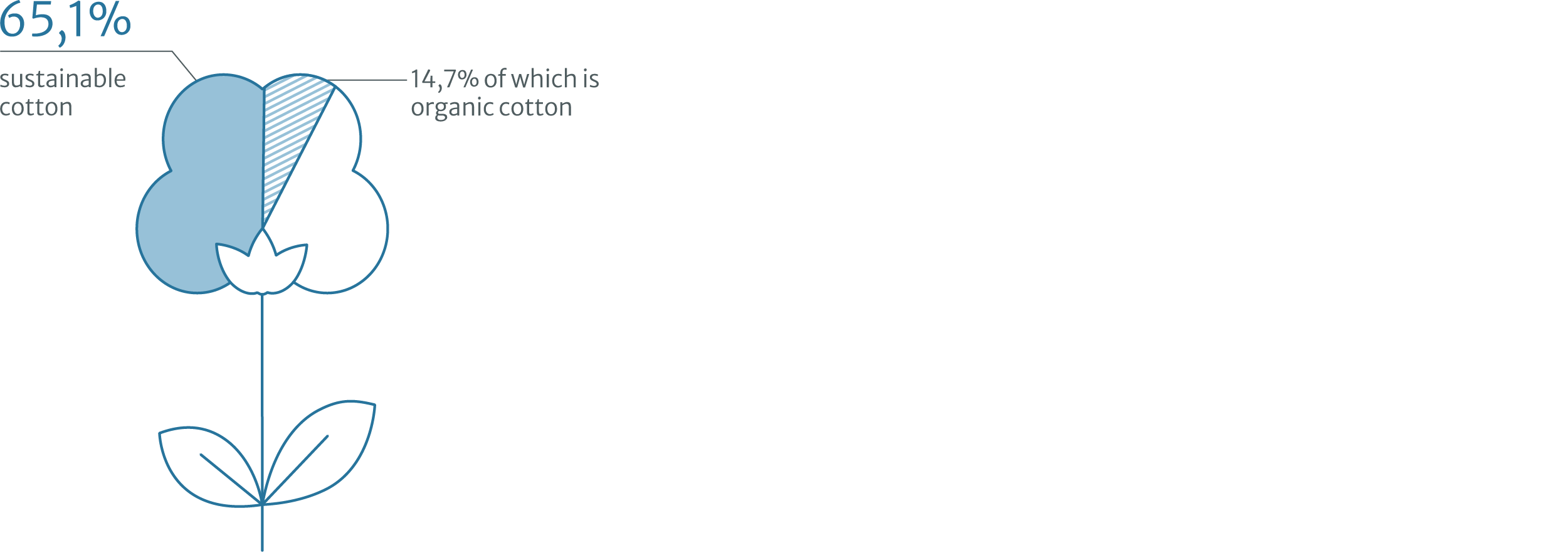
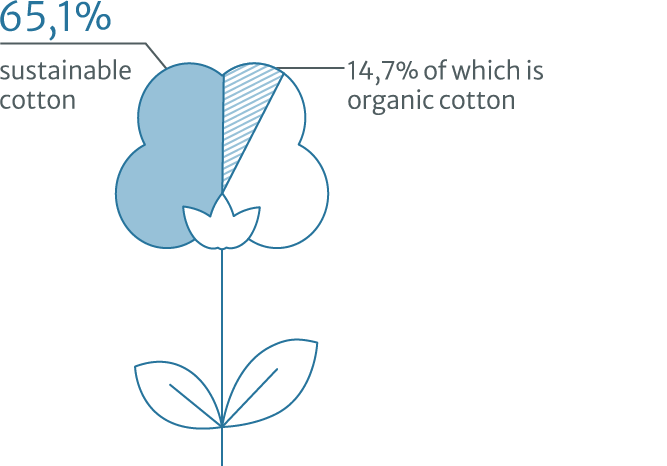
In chapter 4 you can read detailed background information on the 2021 Review Process.
Further information on the Review Process can be found on the Textiles Partnership website as well as the Review reports of all members.
In 2021, 30 members took part in the collective engagement: in the four Partnership Initiatives (PI) Tamil Nadu, wastewater, complaint mechanisms, living wages and in the pilot project organic cotton.
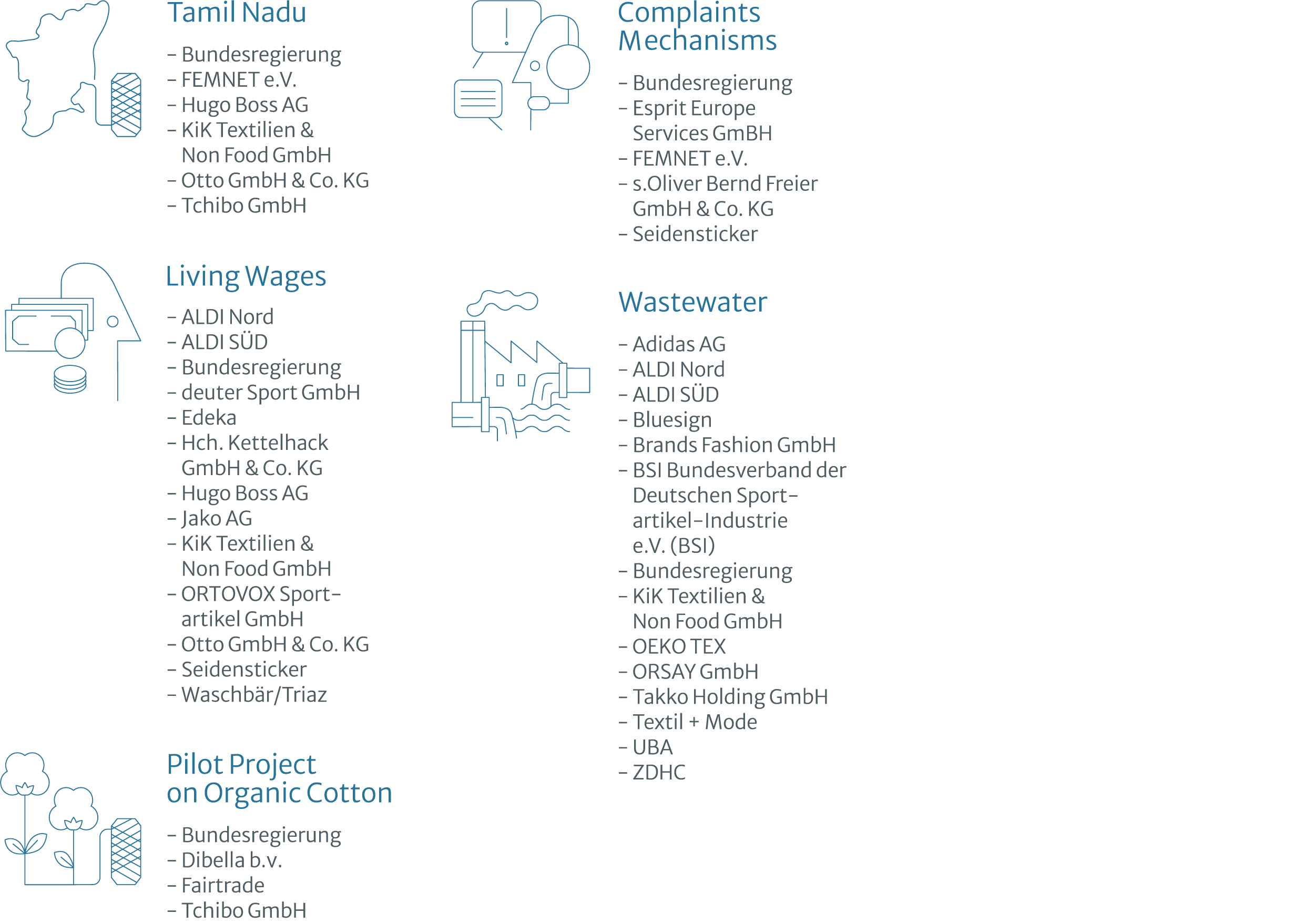

Further information on the collective engagement of the Textiles Partnership members in chapter 5.
Events
Online, hybrid and face-to-face
Also in 2021, most events were still held online due to the ongoing Corona pandemic. Although we are now familiar with virtual meetings and are also aware of their advantages, it was nice that around 70 members were able to meet in presence at the hybrid Working Meeting in October. Another approximately 30 people took part virtually.
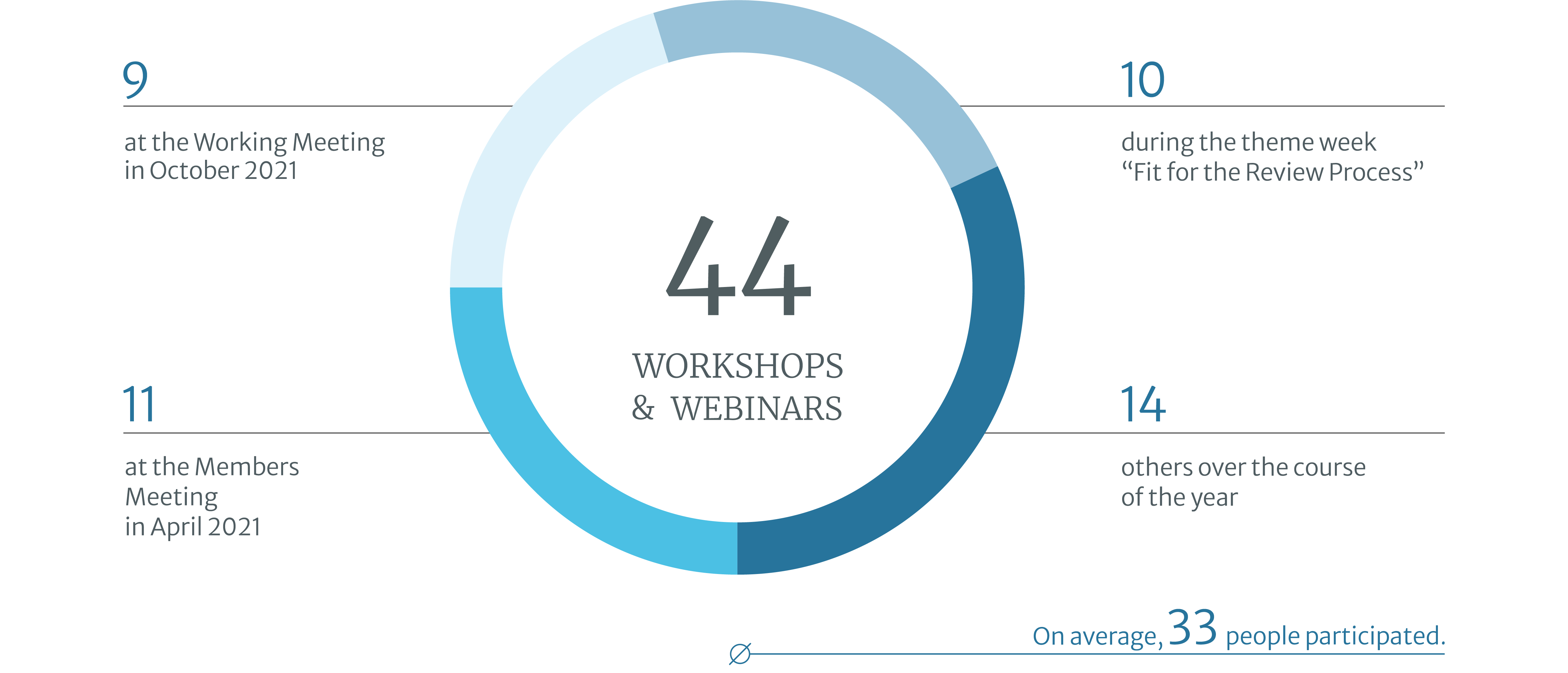
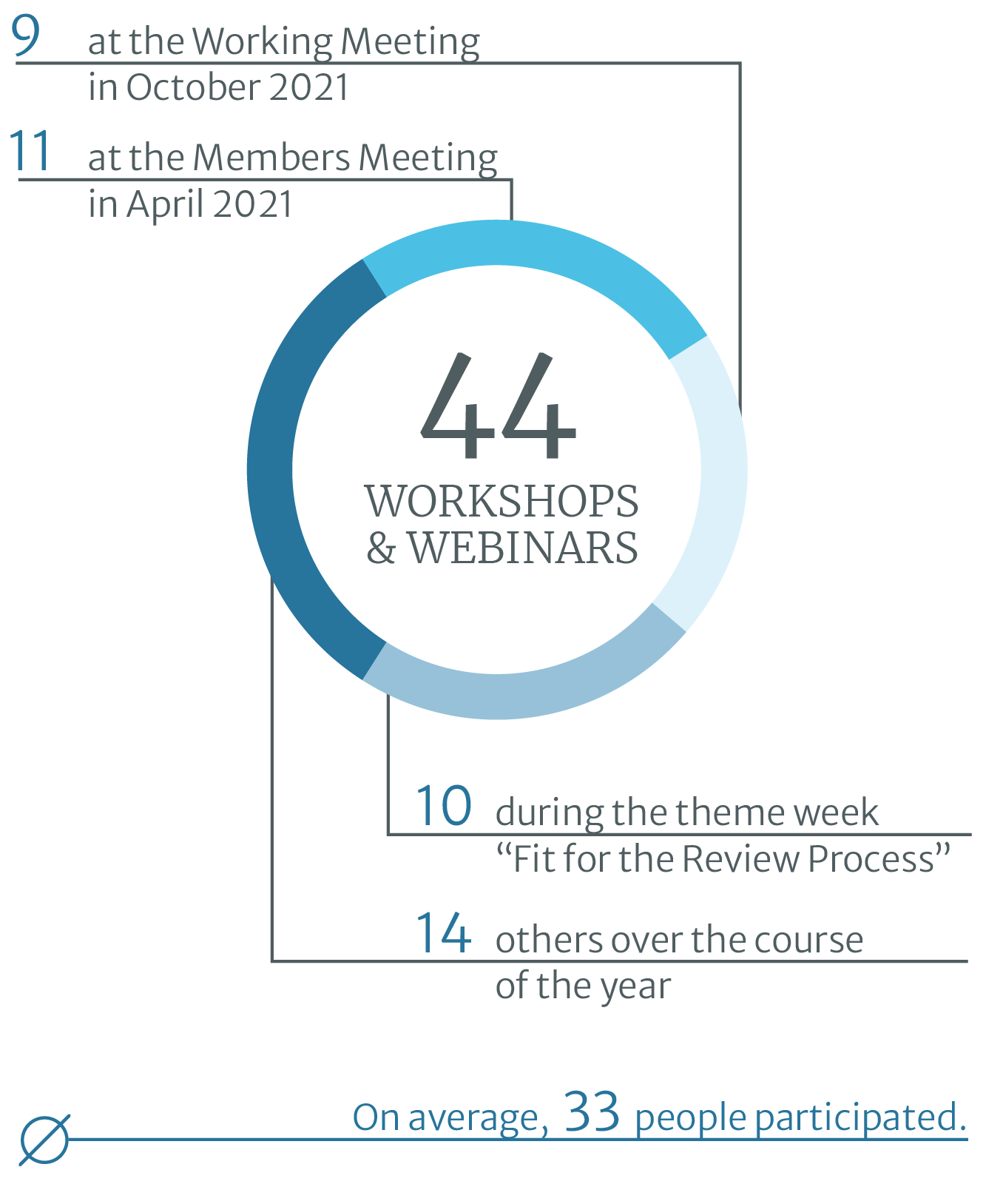
Top 10 events by number of participants
As in previous years, a particularly large number of members participated in workshops and further sessions at the Members’ Meeting (MM) and the Working Meeting (WM). Also pleasing is the great interest in the various webinars and workshops around the annual topic Responsible Purchasing Practices.
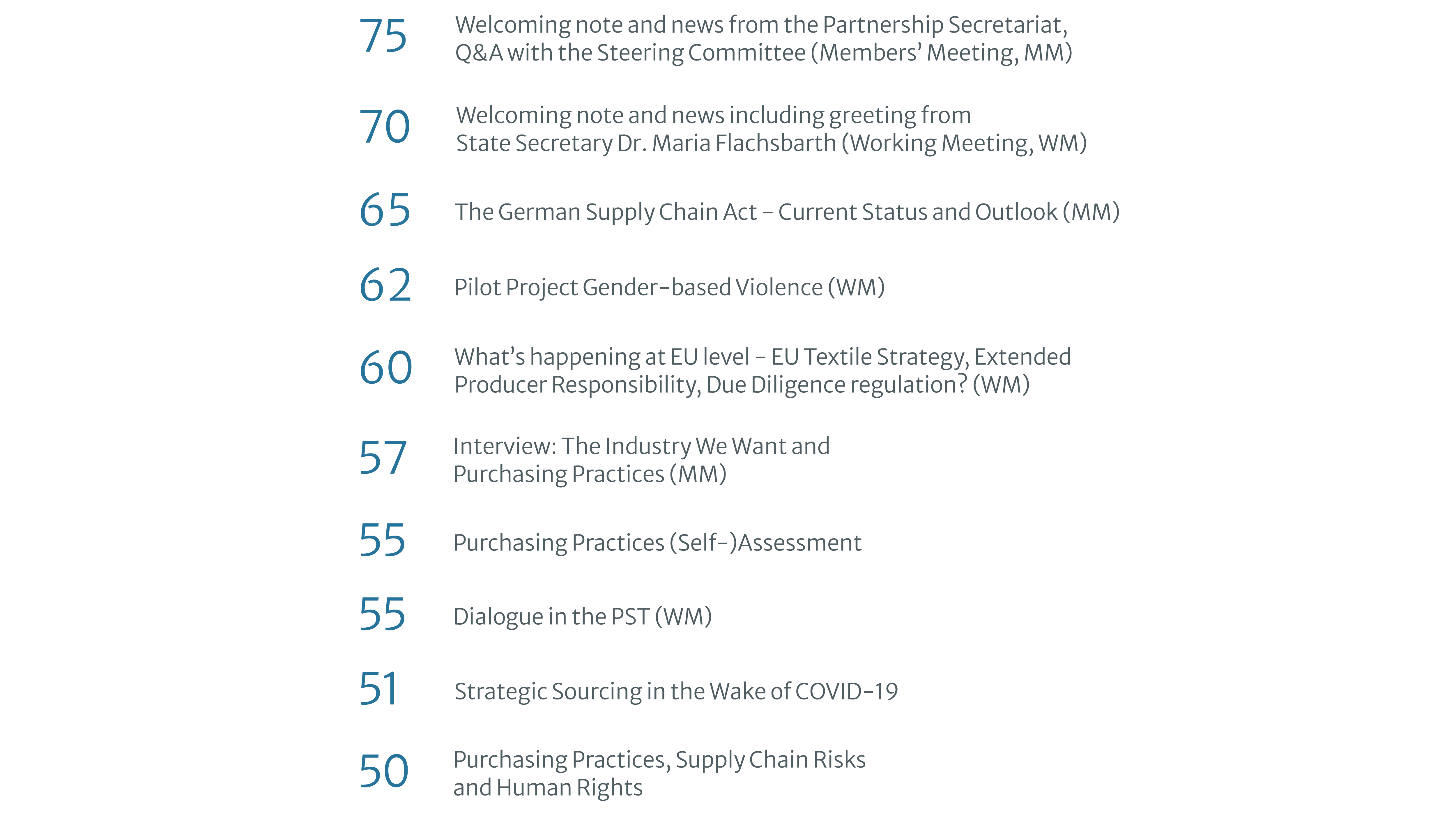
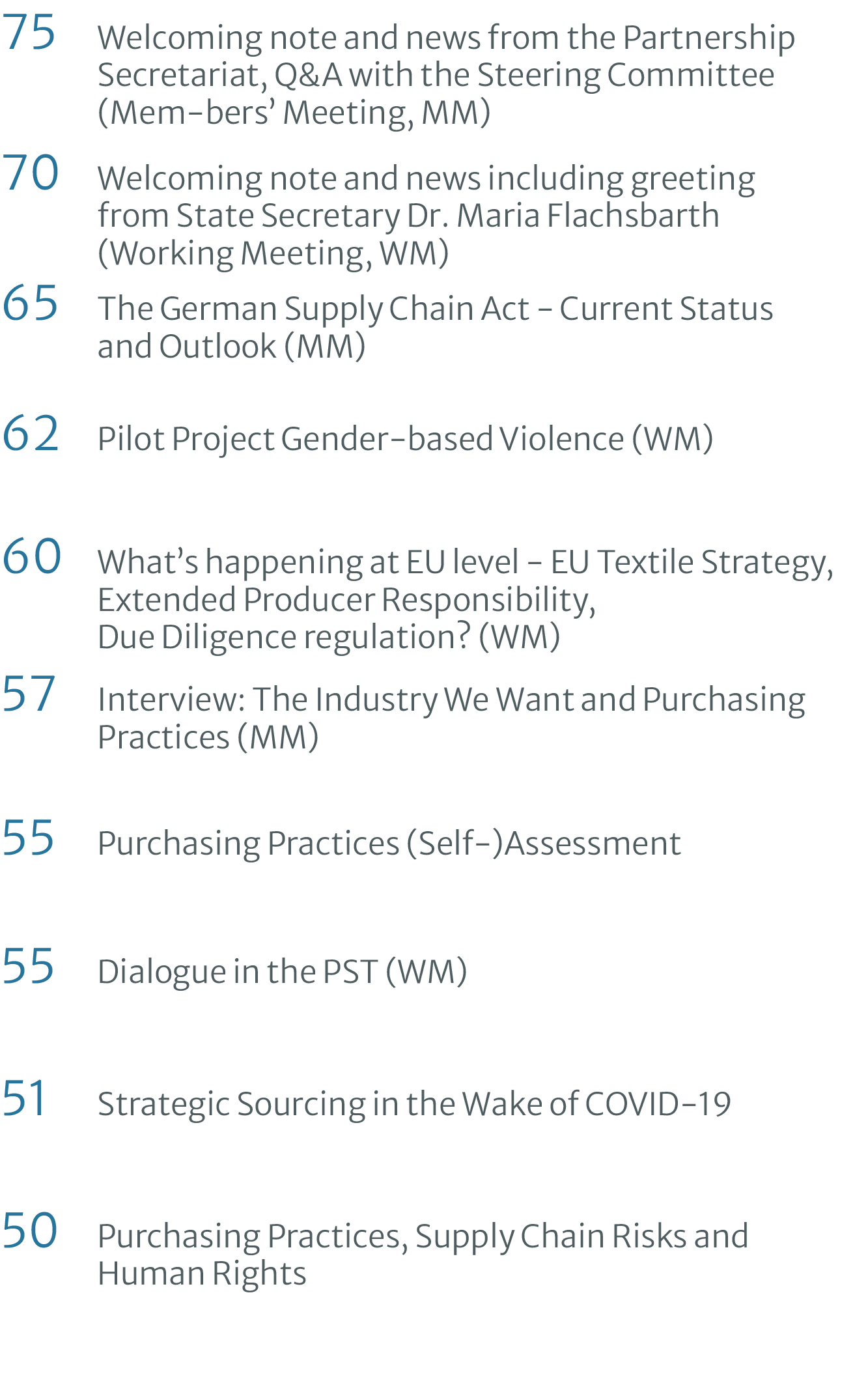
Furthermore, the 15 expert groups, Partnership initiatives, strategy circles, ad hoc and working groups met for more than 80 closed meetings. Details about the different groups can be found in chapter 5.
In addition, the Textiles Partnership participated in various international industry events and formats such as the OECD Forum, events of The Industry We Want and the webinar series Asian Dialogues. Around 210 people took part in the session “Scaling Responsible Purchasing Practices through Effective Supply Chain Partnerships” organized together with amfori, ETI and Fair Wear Foundation at the OECD Forum on 3 February, 2021.
Support material
In connection with the Review Process, the Textiles Partnership published various guidelines on individual sector risks, risk analysis and due diligence in 2021. In addition, further handouts, e-learnings and materials have been created. Most of the documents can be downloaded from the Textiles Partnership website. Some are exclusively reserved for Textile Partnership members.
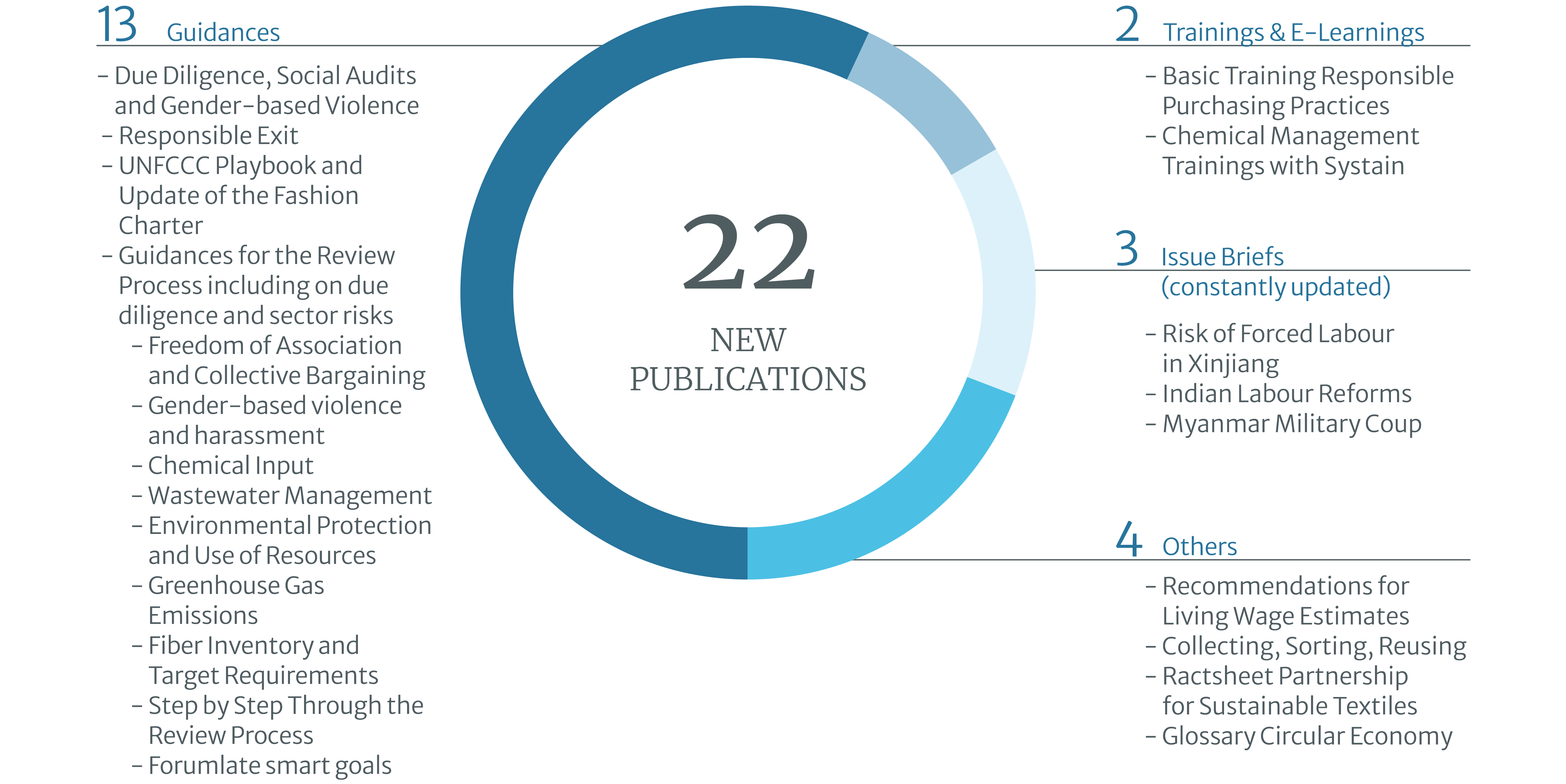

Chapter 4
Review Process 2021
Implementing and reporting on due diligence in a structured manner
The Review Process stands for the individual responsibility of the companies in the Partnership for Sustainable Textiles to implement due diligence in their supply network.
The Textiles Partnership had fundamentally revised the Review Process on the basis of OECD recommendations. It is now focusing even more strongly than before on the continuous improvement of social and ecological conditions in the value chain in line with the OECD due diligence guideline.
The Review Process should have taken place in 2020, but was suspended due to the COVID-19 pandemic, so it was carried out for the first time in its revised version in 2021. Despite the ongoing challenges associated with the pandemic, companies have participated in the Review Process and provided the necessary resources.
About the Review Process
The members of the Partnership for Sustainable Textiles work together for social, ecological and economic improvements along the entire textile supply chain. Their individual commitment to this common goal will be concretized and documented in the Review Process. The basis of the Review Process is the risk analysis and risk prioritization along eleven social, ecological and corruption risks. On this basis, member companies derive goals to prevent potential risks and mitigate actual negative effects.
For the first time, one-day assessment meetings for evaluation and consultation took place. A tandem of Partnership secretariat and independent experts evaluated the risk analyses and action plans that the companies had previously entered in the Partnership’s own reporting tool TexPerT. In addition to the individual progress made since the last Review Process, the tandem also checked whether the new goals are derived meaningfully and comprehensibly from the risk analysis and whether the goals are sufficiently ambitious. After the discussion, the companies were able to revise their risk analysis as well as the goals and measures once again.
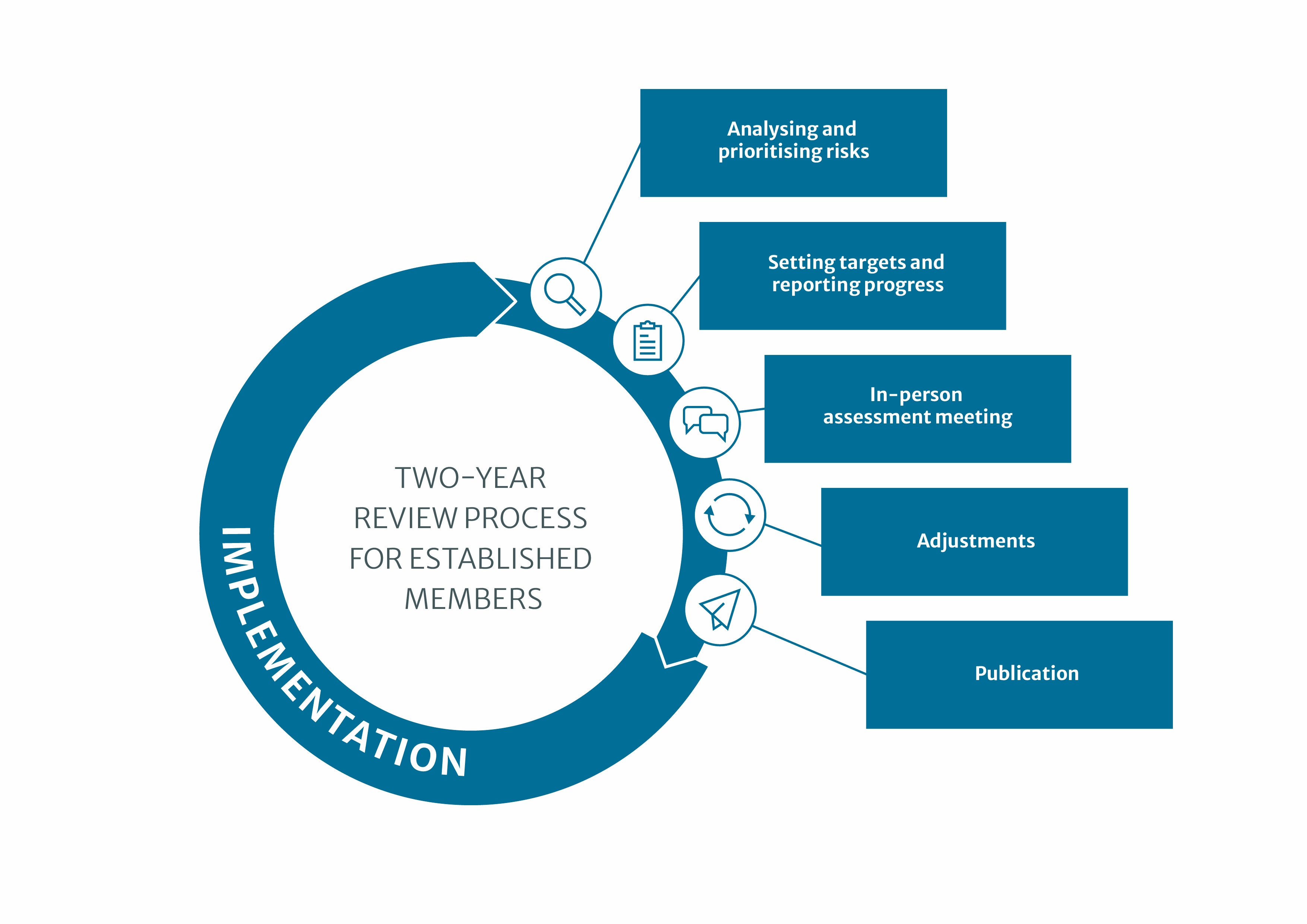

During the assessment meetings, we were able to conduct an in-depth discussion with the companies on the requirements for a systematic risk analysis in accordance with OECD guidelines. For many, analyzing the entire supply chain was new and challenging. Our impression is that the Review Process sensitizes companies to a systematic and overarching risk analysis that focuses on the entire supply chain. We have often seen a positive development from the first versions to the reports that have now been published.
Sibylle Baumgartner von focusright, one of the independent experts, on the assessment meetings
104 members participated in the 2021 Review Process


Joint goal for sustainable cotton
The Partnership companies are only a few steps away from the common cotton target. By 2025, the share of sustainable cotton is to be increased to a total of 70 percent and the proportion of organic cotton contained in it to 20 percent. In the 2021 Review Process, the Partnership companies stated that they procured 971,471 tons of cotton, of which 14.7 percent were organic cotton or in-conversion and 50.4 percent cotton from other sources recognized as sustainable.
In 2018, of almost 800,000 tons, only 10.5 percent were from organic cultivation and 21.7 percent from other sources recognized as sustainable. This means that the share of sustainable cotton has more than doubled from 32.2 percent to 65.1 percent.
Which cotton standards are recognized can be read here.


Goals for the individual sector risks
In the Review Process, companies specifically address their most serious risks. They carry out an individual risk analysis and derive objectives and measures for the eleven sector risks. In this way, they are making a contribution to achieving the Partnership objectives.
If you click on one of the sector risks below, you can see what the associated Partnership goal is and which goals the Partnership companies have set for themselves and their suppliers. The respective sector risk detail page on the Textiles Partnership website is linked as well.
The following goals are often mentioned:
- Training to help raise awareness of sector risk
- Analyses and data queries for more transparency about the supply chain
- Audits to check compliance and correct grievances
- Certificates and standards, for example when purchasing raw materials and chemicals
- Closer cooperation with suppliers and capacity development
- Formulation of requirements for suppliers for the implementation of the due diligence approach
- Environmental protection & use of resources
-
Partnership goal
Further environmental damage in the value chain is avoided; resource consumption in the value chain is optimized.
2021 Review Process
The companies have set themselves a total of 106 goals for the sector risk of environmental protection, use of resources and fibres. The goals and measures with a focus on one’s own company dominate, but there are also some for the deeper supply chain.
Contents of the measures
For the member companies:
- Adjustment of purchasing, including by increasing the proportion of sustainable fibres and the use of certificates
- Adaptation of product development with a focus on circular economy, recycling and certificates
- Awareness raising and training
- Analyses
For Tier II (material production) and Tier III (raw material processing):
- Sensitisation, for example through marketing and communication to promote sustainable products as well as to raise awareness of product use and recycling, for example through care instructions and recycling offers
- Product development with regard to closing the loop, degradable products, recycling and residual use in production
For Tier IV (extraction of raw materials):
- Certificates and standards
- Cooperation and capacity development, for example through pilot projects, for example on water management
Exemplary goals
“By 2025, the principles of the circular economy should be anchored in the relevant core processes.” – Otto Group
“By 2025 40% reduction in water consumption at Tier 2 supplier facilities (against 2017 baseline).” – adidas
“Zero Waste bis 2025.” – Lodenfrey
Further information on sector risk environmental protection & use of resources.
- Wages and Social Security
-
Partnership goal
In all companies/business partnerships in the value chain, living wages are paid.
2021 Review Process
Companies have set themselves a total of 92 goals for the sector risk of wages and social benefits. The majority of the goals and measures focus on the own company and the supply chain stage of the final product production and packaging (Tier 1).
Contents of the measures
For the member companies:
- Developing a strategy
- Analysis and adaptation of purchasing practices
- Raising awareness in purchasing
- Anchoring in the company
For Tier I (final product manufacturing and packaging):
- Cooperation with producers, for example in the analysis of wage gaps and the definition of target wages
- Training and awareness raising
Exemplary goal
“Establishment of a Group-wide working group (‘expert circle’) on the topic of Living Wages in 2021 with the aim of developing a long-term strategy on the subject of living wages in 2022 and implementing the contents of the Living Wage Lab in the Group.” – Otto Group
Further information on sector risk wages and social security.
- Freedom of Association and Collective Bargaining
-
Partnership goal
Freedom of association and collective bargaining are possible in all companies/business partnerships in the value chain.
2021 Review Process
Companies have set themselves a total of 77 goals for the sector risk of freedom of association and collective bargaining. The majority of the goals and measures focus on the supply chain stage of the final product production and packaging (Tier 1). Thematically, they comparatively often include complaint mechanisms.
Contents of the measures
For Tier I (final product manufacturing and packaging):
- Analyses of the status quo at supplier level with the aim of deriving measures from this
- Collaboration and capacity development, for example through committees / employee meetings
- Awareness raising and training
For Tier II (material production):
- Analyses, including country-based risk analyses and supplier-specific analyses of the status quo
- Extension of complaint mechanisms
- Definition of measures
For the member companies:
- Awareness-raising and training as well as knowledge building
- Inclusion of the topic in policy statement / policy
- Embedding policies in your own company
- Cross-functional reconciliation and setting up workgroups
Exemplary goals
“Thus, possible wage gaps, such as in the sewing shop in Romania, can be identified and settled more quickly. In order to view and monitor these wage structures, we are also planning internal audits in the deeper supply chain, e.g. in Turkey (wet processes).” – erlich textil
“As part of the Parntership Initiative “Living Wages”, we plan to seek dialogue with national and international trade unions and/or civil society organisations as well as other initiatives in the “Living Wage Lab” by the end of April 2023 in order to understand the systemic prerequisites for the negotiation and payment of living wages and to identify starting points, the right to freedom of association and collective bargaining in the used main production facilities (Tier 1).” – ALDI Süd
Further information on sector risk freedom of association and collective bargaining.
- Child and Forced Labour
-
Partnership goal
There is zero tolerance for all kinds of child and forced labour in all companies/business partnerships in the value chain.
2021 Review Process
The companies have set themselves 84 goals for the sector risk of child and forced labour. The topic of child labour tends to dominate. The focus of the goals and measures is strongly on the level of the member companies and their direct suppliers (final product production and packaging). Compared to other sector risks, the Partnership companies also set themselves more goals and measures at Tier II (material production) and Tier III (raw material processing).
Contents of the measures
For the member companies:
- Development of a strategy
- Formulation of clear supplier requirements (zero tolerance for child labour)
- Adaptation of purchasing guidelines with a strong focus on certifications and the monitoring of unauthorized procurement
For Tier I (final product manufacturing and packaging):
- Supplier requirements, such as contractual assurances and zero tolerance policies regarding child labour
For Tier IV (extraction of raw materials):
- Pilot projects with certification bodies to reduce the risk of child labour. This is especially true for cotton
Exemplary goal
“Reducing the risk of child and forced labour in cotton production by systematically increasing transparency on cotton origin. The origin of cotton (at country level) should be known at 40% of the volume by 2023.” – Hch. Kettelhack GmbH & Co. KG
Further information on sector risk child and forced labour.
- Discrimination, Sexual Harassment & Gender-Based Violence
-
Partnership goal
There is zero tolerance for any form of discrimination, in particular sexual harassment and gender-based violence, in all companies/business partnerships in the value chain.
2021 Review Process
Companies have set themselves a total of 78 goals for the sector risk of discrimination, sexual harassment and gender-based violence. The majority of the goals and measures focus on Tier I (final product production and packaging) as well as on the companies themselves.
Contents of the measures
For the member companies:
- Developing a strategy
- Create supplier requirements as well as policies and guidelines
- Adaptation of and training on audits
- Anchoring in the company
For Tier I (final product manufacturing and packaging):
- Improvement of complaint mechanisms and complaint management
- Training and awareness raising
- Audits
- Exchange with workers and the establishment of “anti-harassment committees”
- Disclosure of supplier requirements
Exemplary goals
“Establish an anonymous and reliable complaints system for employees of all production partners on Tier 1 by the end of 2022.” – Hakro
“In 2023, all workers at our Tier 1 producer, if the Corona pandemic allows, will be trained on equal opportunities and oppression of minorities. We will also sensitize the local communities to the topics of proper treatment of oppressed minorities and avoidance of discrimination.” – 3 Freunde
“By 2023, we will make audits more gender-sensitive in cooperation with GOTS. To this end, we remain in close contact with gotS, which is currently included in putting explicitly gender-sensitive social audits into practice for the first time. The basis is the guideline “Due Diligence, Social Audits and Gender-Based Violence and Harassment”, which members of the Textiles Partnership, the International Association of the Natural Textile Industry (IVN) and the Global Organic Textile Standard (GOTS) have developed in 2020 in a joint project on the subject of gender-based violence. We hope that this will not only expand the independent audits, but also make them more gender-sensitive.” – Lanius
Further information on sector risk discrimination, sexual harassment & gender-based violence.
- Working Hours
-
Partnership goal
In all companies/business partnerships in the value chain, compliance with working time requirements and the avoidance of excessive overtime is ensured.
2021 Review Process
Companies have set themselves a total of 65 goals for the sector risk of working hours. The majority of the goals and measures focus on Tier I (final product production and packaging) and the companies themselves. Some objectives have also been defined for Tier II (material production).
Contents of the measures
For the member companies:
- Analysis and adaptation of purchasing practices
- Training and sensitization in purchasing
- Monitoring of actual overtime worked
- Formulation of supplier requirements
- In-depth analyses with the aim of deriving measures from them
For Tier I (final product manufacturing and packaging):
- Cooperation with producers, for example in exchange on capacity planning, in awareness raising and in capacity development
- Monitoring, i.e. data retrieval and systems for recording working hours
- Analyses
- Data collection
- Adaptation of own purchasing practices
For Tier II (material production):
- In-depth analyses and data retrieval
- Expansion of complaint mechanisms and complaint management
Exemplary goal
„The workers at 20 of our tier 1 factories in China are represented by Health & Safety Committees as a means to voice excessive working hours to their management and our auditors by 2023.“ – KiK
Further information on sector risk working hours.
- Health and Safety
-
Partnership goal
Fire protection and building safety as well as the avoidance of occupational accidents are ensured in all companies/all business partnerships in the value chain.
2021 Review Process
The companies have set themselves a total of 79 goals for the health and safety sector risk. The majority of the goals and measures focus on Tier I (final product production and packaging). Less frequently, but equally represented, are measures with a focus on one’s own company or with a focus on Tier II (material production).
Contents of the measures
For the member companies:
- Joining or exchanging ideas with initiatives, for example a focus on the continuation of the RMG Sustainability Council (RSC, formerly “Bangladesh Accord”)
- Analysis and adaptation of purchasing practices
- Regulation of purchasing by means of certificates
- Inclusion of the topic in policy statement / policy
- Embedding in your own company
For Tier I (final product manufacturing and packaging):
Often existing measures are built upon by:
- Monitoring through data retrieval and audits
- Collaboration and Capacity Development
- Awareness raising and training
- Certificates
For Tier II (material production):
- Measures to improve complaint mechanisms
- Collaboration and Capacity Development
- Training and awareness raising
- Measures for more supply chain transparency
Tier III (raw material processing) and Tier IV (Rohstoffgewinnung):
- Certificates
- Awareness raising and training
- Disclosure of supplier requirements
Exemplary goal
“ALDI remains committed to fire protection and building safety in Bangladesh. As a member of the Brands Association, we will implement this through the Ready Made Garment Sustainability Council (RSC), successor organisation to the Accord. In 2021, we will become a member of the Brand Association. Membership allows us to continue working with other companies, unions and local stakeholders to create a safe working environment for all bangladeshi manufacturing facilities workers.” – Aldi Nord
Further information on sector risk health and safety.
- Corruption
-
Partnership goal
There is zero tolerance for all forms of corruption, extortion and bribery.
2021 Review Process
Companies have set themselves a total of 65 goals for the sector risk of corruption. The majority of the goals and measures focus on Tier I (final product manufacturing and packaging), followed by measures with a focus on the companies themselves.
Contents of the measures
For the member companies:
- Awareness raising and training, especially in purchasing
- Formulation of supplier requirements
- Embedding the topic of corruption in policy statements and processes
For Tier I (final product manufacturing and packaging):
- Disclosure of supplier requirements, for example by signing the Code of Conduct
- Awareness raising and training
- Collaboration and capacity development through joint actions
- Specific analyses
For Tier II (material production):
- Disclosure of supplier requirements
- Cooperation and capacity development in direct supplier relationships (joint measures)
Exemplary goal
„Until 2023 we will provide trainings on anti-corruption for at least 80% of the employees in the entire supply chain.“ – Ceres Clothing
Further information on sector risk corruption.
- Climate and GHG Emissions
-
Partnership goal
Greenhouse gas emissions are minimized throughout the entire value chain.
2021 Review Process
The companies have set themselves a total of 89 goals for the sector risk of climate protection and greenhouse gas emissions. The companies have set themselves goals and measures for all stages of the value chain. A special focus is on the own company and Tier I (final product production and packaging).
Contents of the measures
For the member companies:
- Analyses with a focus on the calculation of Scope 1 and Scope 2 emissions
- Definition of measure
For importers and agents:
- Analyses, such as the calculation of Scope 3 emissions
- Topics such as sustainable transport
For Tier I (final product manufacturing and packaging):
- Analyses Calculation of Scope 3 emissions
- Supplier-level status quo analysis
- Definition of measures
- Collaboration and capacity development, for example for the analysis and definition of measures
- Awareness raising and training
For Tier II (material production), Tier III (raw material processing) and Tier IV (extraction of raw materials):
- Analyses for the calculation of Scope 3 emissions
- Supplier-level status quo analysis
- Measures to adapt the product range through recycled raw materials or certificates
Exemplary goals
“100% sustainable textile fibres will be implemented by 2025. These more sustainable fibers have a lower CO2 footprint than conventional ones. For example, by reducing the use of artificial fertilizers or by conserving resources through the use of recycled materials.” – Tchibo
“Calculation of the complete Company Carbon Footprint (baseline) incl. Scope 3 taking into account primary data from Tier 4 and Tier 2 by the end of the reporting period.” – Ortovox
Further information on sector risk climate and GHG emissions.
- Chemical Use and Wastewater
-
Partnership goal
There are no negative effects on people and the environment through the use of chemicals in the value chain.
2021 Review Process
The companies have set themselves a total of 95 goals for the sector risk of chemical use and wastewater. The goals and measures focus strongly on Tier II (material production), followed by Tier I (final product production and packaging) and the companies themselves.
Contents of the measures
For the member companies:
- Adaptation of purchasing by using certificates
- Create supplier requirements
- Development or adaptation of monitoring systems
- Knowledge building
For Tier I (final product manufacturing and packaging) and Tier II (material production):
- Certificates and Standards (ZDHC-MRSL, Chemical Management 4sustainability)
- Cooperation and capacity development, in particular on chemical management, implementation of certification, pilot projects
- Awareness raising and training
- Disclosure of supplier requirements
- Analyses of the status quo at supplier level (incl. data retrieval)
Exemplary goals
“We will communicate the ZDHC-MRSL to all suppliers at Tier 2 and Tier 3 level by the end of 2023 and then analyse who is compliant. In the event of non-compliance, we will provide you with the support services.” – Karl Dieckhoff
“80% of wet process factories have a wastewater test or ZDHC InCheck Report by 2023.” – Tchibo
“Our goal is to establish a chemical and wastewater management system within the next 2 years. In addition, we would like to communicate the Manufacturing Restricted Substances List (ZDHC MRSL) developed within the framework of Zero Discharge of Hazardous Chemicals (ZDHC) to suppliers and producers and establish them within the next 2 years.” – erlich textil
Further information on sector risk chemical use and wastewater.
- Animal Welfare
-
Partnership goal
Any practices that endanger the welfare of animals in the value chain are eliminated.
2021 Review Process
The companies have set themselves a total of 41 goals for the sector risk of animal welfare. Most of the goals and measures focus on Tier IV (raw material extraction), others on the company’s own company and Tier I (final product production and packaging).
Contents of the measures
For the member companies:
- Formulation and communication of policies and guidelines, usually on supplier requirements
- Assortment and purchasing adjustments with regard to the use of certificates or the search for alternative raw materials
For Tier I (final product manufacturing and packaging):
- Disclosure of supplier requirements, such as guarantees to exclude mulesing
For Tier IV (extraction of raw materials):
- Cooperation with certification schemes, especially for wool
Exemplary goals
“In order to bring the virgin wool collection back into production, our goal is to find a supplier who offers wool from certified organic animal husbandry, virgin wool with the “Responsible Wool Standard” or wool as a waste product. As long as the collection is not reproduced.” – erlich textil
“Increase the proportion of organic or RWS certified wool to 15% by 2023. Introduction of a new ERP [Enterprise Resource Planning] system, which enables the systematic recording of certificates and information on the origin of the wool and thus creates more transparency.” – Lodenfrey
Further information on sector risk animal welfare.
Environmental protection & use of resources
Partnership goal
Further environmental damage in the value chain is avoided; resource consumption in the value chain is optimized.
2021 Review Process
The companies have set themselves a total of 106 goals for the sector risk of environmental protection, use of resources and fibres. The goals and measures with a focus on one’s own company dominate, but there are also some for the deeper supply chain.
Contents of the measures
For the member companies:
- Adjustment of purchasing, including by increasing the proportion of sustainable fibres and the use of certificates
- Adaptation of product development with a focus on circular economy, recycling and certificates
- Awareness raising and training
- Analyses
For Tier II (material production) and Tier III (raw material processing):
- Sensitisation, for example through marketing and communication to promote sustainable products as well as to raise awareness of product use and recycling, for example through care instructions and recycling offers
- Product development with regard to closing the loop, degradable products, recycling and residual use in production
For Tier IV (extraction of raw materials):
- Certificates and standards
- Cooperation and capacity development, for example through pilot projects, for example on water management
Exemplary goals
“By 2025, the principles of the circular economy should be anchored in the relevant core processes.” – Otto Group
“By 2025 40% reduction in water consumption at Tier 2 supplier facilities (against 2017 baseline).” – adidas
“Zero Waste bis 2025.” – Lodenfrey
Further information on sector risk environmental protection & use of resources.
Wages and Social Security
Partnership goal
In all companies/business partnerships in the value chain, living wages are paid.
2021 Review Process
Companies have set themselves a total of 92 goals for the sector risk of wages and social benefits. The majority of the goals and measures focus on the own company and the supply chain stage of the final product production and packaging (Tier 1).
Contents of the measures
For the member companies:
- Developing a strategy
- Analysis and adaptation of purchasing practices
- Raising awareness in purchasing
- Anchoring in the company
For Tier I (final product manufacturing and packaging):
- Cooperation with producers, for example in the analysis of wage gaps and the definition of target wages
- Training and awareness raising
Exemplary goal
“Establishment of a Group-wide working group (‘expert circle’) on the topic of Living Wages in 2021 with the aim of developing a long-term strategy on the subject of living wages in 2022 and implementing the contents of the Living Wage Lab in the Group.” – Otto Group
Further information on sector risk wages and social security.
Freedom of Association and Collective Bargaining
Partnership goal
Freedom of association and collective bargaining are possible in all companies/business partnerships in the value chain.
2021 Review Process
Companies have set themselves a total of 77 goals for the sector risk of freedom of association and collective bargaining. The majority of the goals and measures focus on the supply chain stage of the final product production and packaging (Tier 1). Thematically, they comparatively often include complaint mechanisms.
Contents of the measures
For Tier I (final product manufacturing and packaging):
- Analyses of the status quo at supplier level with the aim of deriving measures from this
- Collaboration and capacity development, for example through committees / employee meetings
- Awareness raising and training
For Tier II (material production):
- Analyses, including country-based risk analyses and supplier-specific analyses of the status quo
- Extension of complaint mechanisms
- Definition of measures
For the member companies:
- Awareness-raising and training as well as knowledge building
- Inclusion of the topic in policy statement / policy
- Embedding policies in your own company
- Cross-functional reconciliation and setting up workgroups
Exemplary goals
“Thus, possible wage gaps, such as in the sewing shop in Romania, can be identified and settled more quickly. In order to view and monitor these wage structures, we are also planning internal audits in the deeper supply chain, e.g. in Turkey (wet processes).” – erlich textil
“As part of the Parntership Initiative “Living Wages”, we plan to seek dialogue with national and international trade unions and/or civil society organisations as well as other initiatives in the “Living Wage Lab” by the end of April 2023 in order to understand the systemic prerequisites for the negotiation and payment of living wages and to identify starting points, the right to freedom of association and collective bargaining in the used main production facilities (Tier 1).” – ALDI Süd
Further information on sector risk freedom of association and collective bargaining.
Child and Forced Labour
Partnership goal
There is zero tolerance for all kinds of child and forced labour in all companies/business partnerships in the value chain.
2021 Review Process
The companies have set themselves 84 goals for the sector risk of child and forced labour. The topic of child labour tends to dominate. The focus of the goals and measures is strongly on the level of the member companies and their direct suppliers (final product production and packaging). Compared to other sector risks, the Partnership companies also set themselves more goals and measures at Tier II (material production) and Tier III (raw material processing).
Contents of the measures
For the member companies:
- Development of a strategy
- Formulation of clear supplier requirements (zero tolerance for child labour)
- Adaptation of purchasing guidelines with a strong focus on certifications and the monitoring of unauthorized procurement
For Tier I (final product manufacturing and packaging):
- Supplier requirements, such as contractual assurances and zero tolerance policies regarding child labour
For Tier IV (extraction of raw materials):
- Pilot projects with certification bodies to reduce the risk of child labour. This is especially true for cotton
Exemplary goal
“Reducing the risk of child and forced labour in cotton production by systematically increasing transparency on cotton origin. The origin of cotton (at country level) should be known at 40% of the volume by 2023.” – Hch. Kettelhack GmbH & Co. KG
Further information on sector risk child and forced labour.
Discrimination, Sexual Harassment & Gender-Based Violence
Partnership goal
There is zero tolerance for any form of discrimination, in particular sexual harassment and gender-based violence, in all companies/business partnerships in the value chain.
2021 Review Process
Companies have set themselves a total of 78 goals for the sector risk of discrimination, sexual harassment and gender-based violence. The majority of the goals and measures focus on Tier I (final product production and packaging) as well as on the companies themselves.
Contents of the measures
For the member companies:
- Developing a strategy
- Create supplier requirements as well as policies and guidelines
- Adaptation of and training on audits
- Anchoring in the company
For Tier I (final product manufacturing and packaging):
- Improvement of complaint mechanisms and complaint management
- Training and awareness raising
- Audits
- Exchange with workers and the establishment of “anti-harassment committees”
- Disclosure of supplier requirements
Exemplary goals
“Establish an anonymous and reliable complaints system for employees of all production partners on Tier 1 by the end of 2022.” – Hakro
“In 2023, all workers at our Tier 1 producer, if the Corona pandemic allows, will be trained on equal opportunities and oppression of minorities. We will also sensitize the local communities to the topics of proper treatment of oppressed minorities and avoidance of discrimination.” – 3 Freunde
“By 2023, we will make audits more gender-sensitive in cooperation with GOTS. To this end, we remain in close contact with gotS, which is currently included in putting explicitly gender-sensitive social audits into practice for the first time. The basis is the guideline “Due Diligence, Social Audits and Gender-Based Violence and Harassment”, which members of the Textiles Partnership, the International Association of the Natural Textile Industry (IVN) and the Global Organic Textile Standard (GOTS) have developed in 2020 in a joint project on the subject of gender-based violence. We hope that this will not only expand the independent audits, but also make them more gender-sensitive.” – Lanius
Further information on sector risk discrimination, sexual harassment & gender-based violence.
Working Hours
Partnership goal
In all companies/business partnerships in the value chain, compliance with working time requirements and the avoidance of excessive overtime is ensured.
2021 Review Process
Companies have set themselves a total of 65 goals for the sector risk of working hours. The majority of the goals and measures focus on Tier I (final product production and packaging) and the companies themselves. Some objectives have also been defined for Tier II (material production).
Contents of the measures
For the member companies:
- Analysis and adaptation of purchasing practices
- Training and sensitization in purchasing
- Monitoring of actual overtime worked
- Formulation of supplier requirements
- In-depth analyses with the aim of deriving measures from them
For Tier I (final product manufacturing and packaging):
- Cooperation with producers, for example in exchange on capacity planning, in awareness raising and in capacity development
- Monitoring, i.e. data retrieval and systems for recording working hours
- Analyses
- Data collection
- Adaptation of own purchasing practices
For Tier II (material production):
- In-depth analyses and data retrieval
- Expansion of complaint mechanisms and complaint management
Exemplary goal
„The workers at 20 of our tier 1 factories in China are represented by Health & Safety Committees as a means to voice excessive working hours to their management and our auditors by 2023.“ – KiK
Further information on sector risk working hours.
Health and Safety
Partnership goal
Fire protection and building safety as well as the avoidance of occupational accidents are ensured in all companies/all business partnerships in the value chain.
2021 Review Process
The companies have set themselves a total of 79 goals for the health and safety sector risk. The majority of the goals and measures focus on Tier I (final product production and packaging). Less frequently, but equally represented, are measures with a focus on one’s own company or with a focus on Tier II (material production).
Contents of the measures
For the member companies:
- Joining or exchanging ideas with initiatives, for example a focus on the continuation of the RMG Sustainability Council (RSC, formerly “Bangladesh Accord”)
- Analysis and adaptation of purchasing practices
- Regulation of purchasing by means of certificates
- Inclusion of the topic in policy statement / policy
- Embedding in your own company
For Tier I (final product manufacturing and packaging):
Often existing measures are built upon by:
- Monitoring through data retrieval and audits
- Collaboration and Capacity Development
- Awareness raising and training
- Certificates
For Tier II (material production):
- Measures to improve complaint mechanisms
- Collaboration and Capacity Development
- Training and awareness raising
- Measures for more supply chain transparency
Tier III (raw material processing) and Tier IV (Rohstoffgewinnung):
- Certificates
- Awareness raising and training
- Disclosure of supplier requirements
Exemplary goal
“ALDI remains committed to fire protection and building safety in Bangladesh. As a member of the Brands Association, we will implement this through the Ready Made Garment Sustainability Council (RSC), successor organisation to the Accord. In 2021, we will become a member of the Brand Association. Membership allows us to continue working with other companies, unions and local stakeholders to create a safe working environment for all bangladeshi manufacturing facilities workers.” – Aldi Nord
Further information on sector risk health and safety.
Corruption
Partnership goal
There is zero tolerance for all forms of corruption, extortion and bribery.
2021 Review Process
Companies have set themselves a total of 65 goals for the sector risk of corruption. The majority of the goals and measures focus on Tier I (final product manufacturing and packaging), followed by measures with a focus on the companies themselves.
Contents of the measures
For the member companies:
- Awareness raising and training, especially in purchasing
- Formulation of supplier requirements
- Embedding the topic of corruption in policy statements and processes
For Tier I (final product manufacturing and packaging):
- Disclosure of supplier requirements, for example by signing the Code of Conduct
- Awareness raising and training
- Collaboration and capacity development through joint actions
- Specific analyses
For Tier II (material production):
- Disclosure of supplier requirements
- Cooperation and capacity development in direct supplier relationships (joint measures)
Exemplary goal
„Until 2023 we will provide trainings on anti-corruption for at least 80% of the employees in the entire supply chain.“ – Ceres Clothing
Further information on sector risk corruption.
Climate and GHG Emissions
Partnership goal
Greenhouse gas emissions are minimized throughout the entire value chain.
2021 Review Process
The companies have set themselves a total of 89 goals for the sector risk of climate protection and greenhouse gas emissions. The companies have set themselves goals and measures for all stages of the value chain. A special focus is on the own company and Tier I (final product production and packaging).
Contents of the measures
For the member companies:
- Analyses with a focus on the calculation of Scope 1 and Scope 2 emissions
- Definition of measure
For importers and agents:
- Analyses, such as the calculation of Scope 3 emissions
- Topics such as sustainable transport
For Tier I (final product manufacturing and packaging):
- Analyses Calculation of Scope 3 emissions
- Supplier-level status quo analysis
- Definition of measures
- Collaboration and capacity development, for example for the analysis and definition of measures
- Awareness raising and training
For Tier II (material production), Tier III (raw material processing) and Tier IV (extraction of raw materials):
- Analyses for the calculation of Scope 3 emissions
- Supplier-level status quo analysis
- Measures to adapt the product range through recycled raw materials or certificates
Exemplary goals
“100% sustainable textile fibres will be implemented by 2025. These more sustainable fibers have a lower CO2 footprint than conventional ones. For example, by reducing the use of artificial fertilizers or by conserving resources through the use of recycled materials.” – Tchibo
“Calculation of the complete Company Carbon Footprint (baseline) incl. Scope 3 taking into account primary data from Tier 4 and Tier 2 by the end of the reporting period.” – Ortovox
Further information on sector risk climate and GHG emissions.
Chemical Use and Wastewater
Partnership goal
There are no negative effects on people and the environment through the use of chemicals in the value chain.
2021 Review Process
The companies have set themselves a total of 95 goals for the sector risk of chemical use and wastewater. The goals and measures focus strongly on Tier II (material production), followed by Tier I (final product production and packaging) and the companies themselves.
Contents of the measures
For the member companies:
- Adaptation of purchasing by using certificates
- Create supplier requirements
- Development or adaptation of monitoring systems
- Knowledge building
For Tier I (final product manufacturing and packaging) and Tier II (material production):
- Certificates and Standards (ZDHC-MRSL, Chemical Management 4sustainability)
- Cooperation and capacity development, in particular on chemical management, implementation of certification, pilot projects
- Awareness raising and training
- Disclosure of supplier requirements
- Analyses of the status quo at supplier level (incl. data retrieval)
Exemplary goals
“We will communicate the ZDHC-MRSL to all suppliers at Tier 2 and Tier 3 level by the end of 2023 and then analyse who is compliant. In the event of non-compliance, we will provide you with the support services.” – Karl Dieckhoff
“80% of wet process factories have a wastewater test or ZDHC InCheck Report by 2023.” – Tchibo
“Our goal is to establish a chemical and wastewater management system within the next 2 years. In addition, we would like to communicate the Manufacturing Restricted Substances List (ZDHC MRSL) developed within the framework of Zero Discharge of Hazardous Chemicals (ZDHC) to suppliers and producers and establish them within the next 2 years.” – erlich textil
Further information on sector risk chemical use and wastewater.
Animal Welfare
Partnership goal
Any practices that endanger the welfare of animals in the value chain are eliminated.
2021 Review Process
The companies have set themselves a total of 41 goals for the sector risk of animal welfare. Most of the goals and measures focus on Tier IV (raw material extraction), others on the company’s own company and Tier I (final product production and packaging).
Contents of the measures
For the member companies:
- Formulation and communication of policies and guidelines, usually on supplier requirements
- Assortment and purchasing adjustments with regard to the use of certificates or the search for alternative raw materials
For Tier I (final product manufacturing and packaging):
- Disclosure of supplier requirements, such as guarantees to exclude mulesing
For Tier IV (extraction of raw materials):
- Cooperation with certification schemes, especially for wool
Exemplary goals
“In order to bring the virgin wool collection back into production, our goal is to find a supplier who offers wool from certified organic animal husbandry, virgin wool with the “Responsible Wool Standard” or wool as a waste product. As long as the collection is not reproduced.” – erlich textil
“Increase the proportion of organic or RWS certified wool to 15% by 2023. Introduction of a new ERP [Enterprise Resource Planning] system, which enables the systematic recording of certificates and information on the origin of the wool and thus creates more transparency.” – Lodenfrey
Further information on sector risk animal welfare.
Chapter 4.3
Retrospect
2021 Review Process
The German Institute for Human Rights (DIMR) accompanied six of the 55 evaluation discussions. The aim was to assess the quality and suitability of the evaluation discussions as an instrument for promoting due diligence obligations in the Textiles Partnership. The DIMR concluded that the evaluation interviews are an important part of the Review Process and should remain a mandatory part of the process in the future. On the one hand, mutual understanding could be significantly increased by the talks. On the other hand, the increase in knowledge that is necessary for the continuous improvement of companies with regard to their implementation of the UN Guiding Principles has increased.
Overall, the Review Process sensitized the companies to a systematic and overarching risk analysis and approach in accordance with the OECD recommendations. The evaluation discussions were appropriate to work specifically towards improving the processes and measures in the companies with a focus on potentially affected persons. Thus, the companies took a “new” risk perspective – the perspective of the (potentially) affected. Nevertheless, in the future it is important to systematically and meaningfully involve those affected and other stakeholders on-site and strengthen their accountability in the risk analyses.
By analyzing and prioritizing their risks, the Partnership companies were able to define goals and measures in an impact-oriented manner. In this Review Process, it has been noticed that many companies continue to find it difficult to move from the identified risks to prioritization and that they do not systematically consider the severity. Another challenge is to formulate effective and SMART goals (SMART = specific, measurable, attainable, realistic, time-bound) that adequately reflect the identified risk. Nevertheless, the goals are a step in the right direction in terms of continuous improvement.
In addition, the Review Process led to companies dealing more intensively than before with the risks in their supply chain and their interactions. Many companies have good knowledge of their direct suppliers, especially RMG factories (Tier 1). However, many companies have not yet succeeded in taking the entire supply chain into account – neither in the risk analysis nor in the deduction of goals and measures. The biggest challenges are the lack of influence and information in the upstream value chain. Companies often assume that they can only take concrete goals and measures with full traceability. It is positive that many companies have undertaken further analyses on the basis of this and have set themselves additional voluntary goals for more traceability and supply chain transparency as well as for the improvement and further development of risk analysis.
Furthermore, the majority of Partnership companies mention the establishment and implementation of effective complaints mechanisms as a major challenge. Grievance processes are often inadequate and many companies are still in the early stages here. In particular, access to complaints mechanisms for those affected at deeper stages of the value chain is difficult. One approach to the solution is the Partnership Initiative Complaint Mechanisms, in which several Parntership members are working to ensure that more textile workers have access to complaint mechanisms and redress. A joint project with the Fair Wear Foundation (FWF) is part of the Partnership Initiative.
Report of the German Institute for Human Rights
The German Institute for Human Rights (Deutsches Institut für Menschenrechte, DIMR) accompanied six of the 55 assessment meetings. The aim was to assess the quality and suitability of the assessment meetings as an instrument for promoting due diligence obligations in the Textiles Partnership. The DIMR concluded that the assessment meetings are an important part of the Review Process and should remain a mandatory part of the process in the future. On the one hand, mutual understanding could be significantly increased by the meetings. On the other hand, there was an enhanced level of knowledge, which is necessary for the continuous improvement of the companies with regard to their implementation of the UN Guiding Principles.
News
Report of the German Institute for Human Rights
Observations and assessments of the DIMR with regard to the assessment meetings in the Review Process.
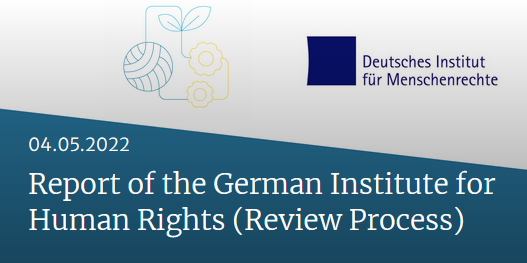

In the Review Process, non-governmental organisations, unions, associations and standard setting organisations report differently than companies and answer three key questions. The reporting also took place from April to the end of May 2021.
The key questions
- How did the organisation contribute to the Partnership during the reporting period (financially, in-kind)?
- What measures did the organisation take to achieve the Partnership goals during the reporting period?
- What measures are you planning to take in the coming reporting period to achieve the Partnership goals?
The members mention measures on individual sector risks and Partnership issues as well as overarching measures. With regard to sector risks, they formulated measures in particular to:
- Use of chemicals and wastewater
- Discrimination, sexual harassment & gender-based violence
- Wages & Social Benefits
- Child and Forced Labour
The contribution to Partnership topics relates primarily to measures on natural and man-made fibres. As overarching measures, the members of the above-mentioned stakeholder groups mention in particular measures to raise awareness.
All reports of the members can be found on the website of the Textiles Partnership.
- PI Complaint Mechanisms
-
In May 2021, after a long pandemic delay, the first module of the Parntership Initiative (PI) Complaint Mechanisms was launched. This is a cooperation project between the Textiles Partnership, the Fair Wear Foundation and the Dutch Agreement on Sustainable Garments and Textile (AGT). The aim is to provide workers in the supply chain of the companies involved with better access to complaint mechanisms and redress. In addition, initial efforts are to be made towards a common, cross-initiative complaint mechanism.
As part of this cooperation, Fair Wear opened its cross-company complaint mechanism to a number of Partnership companies and AGT signatories. Since then, workers who work in the clothing factories of these companies have had the opportunity to contact Fair Wear in the event of grievances.
Esprit, s.Oliver, Seidensticker, G-Star and HEMA are participating in the first pilot phase in Vietnam and India. Femnet and Arisa support the project from the civil society side. In the future, it is planned to expand the project onto other countries and companies and a possibile industry-wide complaint mechanism.
Further information on the Partnership Initiative and the pilot project can be found here: Partnership Initiative Complaint Mechanisms
- PI Tamil Nadu
-
In November 2021, the Partnership Initiative (PI) Tamil Nadu started its second phase. The participants are working together to improve working conditions in textile factories in Tamil Nadu, especially in spinning mills. They want to expand the trainings with management and workers in terms of scope and quality and accompany factories more closely. For this reason, PI is focusing on a smaller number of spinning mills in the second phase: Ten pilot factories were selected in each of the four districts.
Also new is the involvement of trainers from the Tchibo Worldwide Enhancement of Social Quality (WE) program. Tchibo launched this in 2008 as a public-private partnership with GIZ. The WE trainers contribute their many years of expertise in training conception and company approach in order to ensure greater acceptance and participation on the part of factory management together with SAVE.
Further information on the Partnership Initiative Tamil Nadu
- PI Organic Cotton
-
In 2021, the Expert Group on Natural Fibres decided to launch the Partnership Initiative (PI) Organic Cotton in India. The PI envisages supporting at least 6,500 smallholder farmers in the conversion of cultivation from conventional to organic cotton by 2025. The aim of the PI is to increase the amount of organic cotton available on the world market and thus facilitate access for Partnership members. The target volume for the total term of BI is 10,000 MT Lint Cotton. The PI’s main implementation partner is the Organic Cotton Accelerator (OCA).
This goes hand in hand with the Textiles Partnership’s efforts to achieve a share of 70% sustainable cotton for 2025, of which 20% is organic cotton and cotton in-conversion.
Detailed information on the latest Parntersip Initiative can be found in this news article.
- Chemical Fibres
-
The EG Chemical Fibres started in 2018 with the aim of defining what sustainable chemical fibres are and which minimum requirements should apply. This is intended to support companies in the selection of sustainable materials and fiber alternatives.
The EG has produced a glossary on circular economy and started work on a roadmap in 2021, the first building block which includes factsheets on wood-based (cellulosic) and synthetic fibres. The Partnership member German Institute for Textile + Fiber Research (DITF) is working on examining the fibers from different perspectives and establishing decision criteria for a better evaluation of the fiber. The impact on the environment and the quality of the fibres are particularly relevant.
- Gender-Based Violence
-
Together with other multi-stakeholder initiatives (MSI), the members of the expert group revised the Gender Data & Impact Tool developed by BSR to collect gender-disaggregated data. The MSIs have simplified it and adapted it to the needs of the companies. A video describes the process and explains the tool. More about this in the news article.
Together with the International Association of the Natural Textile Industry (IVN) and the GIZ global project Inclusion of People with Disabilities, the members of the EG have developed a guideline for inclusion in 2021. The guide supports companies and their suppliers in promoting the employment of people with disabilities in a non-discriminatory manner.
In 2021, the Textiles Partnership published the handout on due diligence, social audits and gender-based violence. It was drawn up by the EG and is now used by the members. For example, Brands Fashion uses the jointly developed interview guide in close dialogue with its suppliers on the subject of gender-based violence. The dialogue-based approach also meets with interest and approval among suppliers.
Further information on discrimination and gender-based violence can be found on the Textiles Partnership website.
- Climate protection
-
To keep temperatures within the 1.5°C rise, the industry must achieve an absolute reduction in emissions of 45% by 2030 and CO2 neutrality by 2050. To this end, the Textiles Partnership is guided by the requirements of the Fashion Industry Charter for Climate Action. The Partnership members rely on the accounting of their emissions in order to establish targeted measures at producer level. For companies, the Playbook of the Fashion Charter offers an orientation.
The Partnership, its members and partners have developed various tools, including a plan of the conversion measures in stages and ideal time windows as well as a comprehensive comparison of accounting tools “Assessment GHG tools”. In addition, the Fashion Charter developed Climate Action Trainings in cooperation with GIZ and individual companies. The e-learnings are primarily intended to support producers and can be freely used online.
The time pressure and the complex supply chain structures require a high willingness to cooperate on the part of companies, suppliers and service providers. That is why it is important to jointly implement measures across the board, drastically reduce greenhouse gas emissions in production and switch to renewable energies. To this end, the Textiles Partnership, its members and cooperation partners are doing what is necessary and possible: they share knowledge and experience and join forces to jointly slow down climate change.
Further information on climate and greenhouse gas emissions can be found on the Textiles Partnership website.
- Accelerating Circularity Project Europe (ACPE)
-
The topic of circular economy has developed great momentum in the textile sector in the recent years. It is on the political agenda and consumer interest is also increasing. No wonder that (textile) companies are also becoming more and more involved in circular economy. However, no one can implement a circular economy for everyone, and transnational cooperation and synergies between the actors in the textile supply chain are necessary.
That is why the Accelerating Circularity Project Europe (ACPE) hits the nerve of the times. The aim is to enable the textile industry to establish a European circular system. To this end, the entire supply chain (collectors, recyclers, sorters, pre-processers and brands) is working together on Textile to Textile Recycling. The Textiles Partnership has been part of the ACPE since the very beginning and is represented on the Steering Committee. This gives Partnership companies free access to the project.
Nicole Hühn from Sympatex calls on other companies to participate in the project: “It is only a logical consequence that it goes in this direction. We have collection systems and tons of used materials. With ACPE’s project, we have never been closer to getting everyone involved around one table. It would be a pity if the collection, recycling and yarn spinning worked, but the brands that would use the material were missing.”
- Recyclable Product Clones
-
The Working Group Recycling – part of the Expert Group Circular Economy – launched the product clones project in March 2021 together with the Niederrhein University of Applied Sciences. Nine Partnership companies nominated ten products. The aim was to identify barriers to the recyclability of the products and to design the products more sustainably. The university examined the products primarily for recyclability, durability and the use of sustainable materials.
New product ideas from a workshop with circular.fashion can already be put into practice. In 2021, the participants will build on the project and consider how the results can be scaled and what a continuation may look like.
The contribution to the presentation of the results of the project can be found in the news article.
Read also the interview in this annual report with Maike Rabe from the Niederrhein University of Applied Sciences on the product clone project.
- Supply Chain Transparency
-
Supply chain transparency is a basic prerequisite for the implementation of corporate due diligence. Companies can only respond effectively to social, environmental and corruption risks in their supply chain if they know where, how and by whom their products are manufactured.
The aggregated list of production sites that the Textiles Partnership has been publishing via the Open Apparel Registry (OAR) since 2020 also contributes to this. Since 2021, companies and the Textiles Partnership have been able to locate their production sites on a world map and embed them on their website – a tool promoted by the Textiles Partnership. The world map with the aggregated supplier data of the Partnership members can be found on the Partnership website.
The supply to the aggregated list is voluntary. Meanwhile, 25 member companies participate in the list, including companies that have not yet published supplier information. The aggregated list currently includes almost 8600 production sites.
Sharing supply chain information enables better cooperation between members and the more effective use of synergies. This is relevant for a variety of Partnership activities: for example, the aggregated supplier list is used for comparison with an incident list to inform members about incidents in factories or to identify shared production sites in order to be able to implement joint Partnership activities.
- Cotton (EG Natural Fibres)
-
In addition to the conception and initiation of the Partnership Initiative Organic Cotton, the Expert Group (EG) Natural Fibres together with Textile Exchange and GOTS dealt with cotton in conversion in more depth. The transition from conventional to organic cotton is accompanied by a transition period of 24 months (in Europe) and 36 months (in India and the United States), during which particular attention is paid to improving soil fertility and restoring eco-balance.
With a view to the high demand for organic cotton, an increasing investment in cotton in-conversion is required, as the currently available cultivation capacities are not sufficient to meet the increasing demand for organic cotton. A clear commitment to cotton in-conversion by the members of the Textiles Partnership creates an incentive for smallholder farmers to make the time-consuming and cost-intensive conversion to ecological practices, including their certification. This goes hand in hand with the fact that producers can rely on binding purchase quantities. It is precisely these support services that the partners of the pilot project and the Partnership Initiative Organic Cotton in India are providing.
- Virgin Wool (EG Natural Fibres)
-
Member companies that procure virgin wool have committed themselves to ensuring compliance with animal welfare when obtaining virgin wool. This includes the internationally recognized Five Freedoms in Wool Production, including the renunciation of mulesing.
Following on from this, the Textiles Partnership organized an information event together with 4 Pfoten and Waschbär in 2021. This was dedicated to virgin wool, other types of wool and animal welfare. The further development of the Five Freedoms towards the Five-Domain Model, animal welfare risks in the extraction of shearing, merino, alpaca wool, angora and mohair and innovations in wool standards were discussed.
The Textiles Partnership supports wool-producing companies in developing their own declaration of principles on wool and animal welfare.
Further information on sector risk animal welfare
- Pilot Project Organic Cotton
-
The Pilot Project Organic Cotton was successfully launched in June 2020 in South Odisha, India. Already in the first year, 992 small farmers were able to switch from conventional to organic cotton cultivation with a cultivation area of 570 ha. Contamination with genetically modified cotton could be ruled out for the entire production cycle.
In order to improve the economic resilience of the producers, an organic cotton premium and a Fairtrade premium payment were paid in addition to the minimum price. Added together, this was above the usual market price. Already in the first year, small farmers have signaled that they want to continue the cultivation of organic cotton.
Further information can be found on the Textiles Partnership website.
- Complaint Mechanisms Project MUDEM
-
In addition to the Partnership Initiative Complaint Mechanisms, the Textiles Partnership cooperates with local structures – for example in Turkey: The Garment Worker Support Center (WSC) of the Turkish NGO MUDEM supports (refugee) workers in social and legal issues. Workers there can also draw attention to grievances in the workplace. Several Partnership companies also cooperate with MUDEM and ensure that workers in their supply chains know the WSC. In the event of incoming complaints, the companies, employees of the WSC and the respective suppliers work on a solution and remedial measures.
MUDEM-Refugee Support Center
The MUDEM – Refugee Support Center was founded in 2014 in Ankara (Turkey) to help asylum seekers, refugees, immigrants, victims of human trafficking, applicants for international protection and stateless persons at home and abroad. Today, MUDEM-RSC works in six cities, including Istanbul, Ankara and Izmir, with over 100 employees and carries out eight projects that support refugees and asylum seekers in accessing rights and services. One of these projects is the Worker Support Center (WSC), which was founded in 2018. The WSC is a web-based project and offers workers in the textile industry free advice on social and legal problems as well as grievances in the workplace. Learn more here.
- PI Living Wages
-
In the first phase of the Partnership Initiative (PI) Living Wages (May 2019-April 2021), the basic module Purchasing Practices and a training module were implemented. The training module included the implementation of training courses for suppliers of Partnership companies on the subject of price calculation and labour minute costing and was implemented by Fair Wear in September 2020. Partnership members can find training documents in the closed members area.
- Living Wage Lab
-
The Living Wage Lab marks the second phase of the Partnership Initiative Living Wages. The aim is to support members in the development and implementation of individual strategies for living wages and to set up pilot projects together with producers and to develop scalable solutions.
The Living Wage Lab builds on the experiences and results of the previous modules of PI Living Wages and was developed by the Strategy Group on Living Wages, which was launched at the beginning of 2020.
Participants: Institut Südwind, Inkota, DGB, Aldi Süd, Bierbaum-Proenen, Chaps Online, Greiff, Hugo Boss, Kettelhack, KiK, Otto Group, Ortovox, Sympatex, Vaude, Waschbär and GIZ on behalf of BMZ.
Participating companies will also be offered training options, including cost calculation and improving their own purchasing practices.
Together with other organizations such as the Fair Wear Foundation, supplier training is to be offered. Further definable modules, for example in cooperation with the Action Collaboration Transformation (ACT) initiative, are to be added in the future.
PI Complaint Mechanisms
In May 2021, after a long pandemic delay, the first module of the Parntership Initiative (PI) Complaint Mechanisms was launched. This is a cooperation project between the Textiles Partnership, the Fair Wear Foundation and the Dutch Agreement on Sustainable Garments and Textile (AGT). The aim is to provide workers in the supply chain of the companies involved with better access to complaint mechanisms and redress. In addition, initial efforts are to be made towards a common, cross-initiative complaint mechanism.
As part of this cooperation, Fair Wear opened its cross-company complaint mechanism to a number of Partnership companies and AGT signatories. Since then, workers who work in the clothing factories of these companies have had the opportunity to contact Fair Wear in the event of grievances.
Esprit, s.Oliver, Seidensticker, G-Star and HEMA are participating in the first pilot phase in Vietnam and India. Femnet and Arisa support the project from the civil society side. In the future, it is planned to expand the project onto other countries and companies and a possibile industry-wide complaint mechanism.
Further information on the Partnership Initiative and the pilot project can be found here: Partnership Initiative Complaint Mechanisms
PI Tamil Nadu
In November 2021, the Partnership Initiative (PI) Tamil Nadu started its second phase. The participants are working together to improve working conditions in textile factories in Tamil Nadu, especially in spinning mills. They want to expand the trainings with management and workers in terms of scope and quality and accompany factories more closely. For this reason, PI is focusing on a smaller number of spinning mills in the second phase: Ten pilot factories were selected in each of the four districts.
Also new is the involvement of trainers from the Tchibo Worldwide Enhancement of Social Quality (WE) program. Tchibo launched this in 2008 as a public-private partnership with GIZ. The WE trainers contribute their many years of expertise in training conception and company approach in order to ensure greater acceptance and participation on the part of factory management together with SAVE.
Further information on the Partnership Initiative Tamil Nadu
PI Organic Cotton
In 2021, the Expert Group on Natural Fibres decided to launch the Partnership Initiative (PI) Organic Cotton in India. The PI envisages supporting at least 6,500 smallholder farmers in the conversion of cultivation from conventional to organic cotton by 2025. The aim of the PI is to increase the amount of organic cotton available on the world market and thus facilitate access for Partnership members. The target volume for the total term of BI is 10,000 MT Lint Cotton. The PI’s main implementation partner is the Organic Cotton Accelerator (OCA).
This goes hand in hand with the Textiles Partnership’s efforts to achieve a share of 70% sustainable cotton for 2025, of which 20% is organic cotton and cotton in-conversion.
Detailed information on the latest Parntersip Initiative can be found in this news article.
Chemical Fibres
The EG Chemical Fibres started in 2018 with the aim of defining what sustainable chemical fibres are and which minimum requirements should apply. This is intended to support companies in the selection of sustainable materials and fiber alternatives.
The EG has produced a glossary on circular economy and started work on a roadmap in 2021, the first building block which includes factsheets on wood-based (cellulosic) and synthetic fibres. The Partnership member German Institute for Textile + Fiber Research (DITF) is working on examining the fibers from different perspectives and establishing decision criteria for a better evaluation of the fiber. The impact on the environment and the quality of the fibres are particularly relevant.
Gender-Based Violence
Together with other multi-stakeholder initiatives (MSI), the members of the expert group revised the Gender Data & Impact Tool developed by BSR to collect gender-disaggregated data. The MSIs have simplified it and adapted it to the needs of the companies. A video describes the process and explains the tool. More about this in the news article.
Together with the International Association of the Natural Textile Industry (IVN) and the GIZ global project Inclusion of People with Disabilities, the members of the EG have developed a guideline for inclusion in 2021. The guide supports companies and their suppliers in promoting the employment of people with disabilities in a non-discriminatory manner.
In 2021, the Textiles Partnership published the handout on due diligence, social audits and gender-based violence. It was drawn up by the EG and is now used by the members. For example, Brands Fashion uses the jointly developed interview guide in close dialogue with its suppliers on the subject of gender-based violence. The dialogue-based approach also meets with interest and approval among suppliers.
Further information on discrimination and gender-based violence can be found on the Textiles Partnership website.
Climate protection
To keep temperatures within the 1.5°C rise, the industry must achieve an absolute reduction in emissions of 45% by 2030 and CO2 neutrality by 2050. To this end, the Textiles Partnership is guided by the requirements of the Fashion Industry Charter for Climate Action. The Partnership members rely on the accounting of their emissions in order to establish targeted measures at producer level. For companies, the Playbook of the Fashion Charter offers an orientation.
The Partnership, its members and partners have developed various tools, including a plan of the conversion measures in stages and ideal time windows as well as a comprehensive comparison of accounting tools “Assessment GHG tools”. In addition, the Fashion Charter developed Climate Action Trainings in cooperation with GIZ and individual companies. The e-learnings are primarily intended to support producers and can be freely used online.
The time pressure and the complex supply chain structures require a high willingness to cooperate on the part of companies, suppliers and service providers. That is why it is important to jointly implement measures across the board, drastically reduce greenhouse gas emissions in production and switch to renewable energies. To this end, the Textiles Partnership, its members and cooperation partners are doing what is necessary and possible: they share knowledge and experience and join forces to jointly slow down climate change.
Further information on climate and greenhouse gas emissions can be found on the Textiles Partnership website.
Accelerating Circularity Project Europe (ACPE)
The topic of circular economy has developed great momentum in the textile sector in the recent years. It is on the political agenda and consumer interest is also increasing. No wonder that (textile) companies are also becoming more and more involved in circular economy. However, no one can implement a circular economy for everyone, and transnational cooperation and synergies between the actors in the textile supply chain are necessary.
That is why the Accelerating Circularity Project Europe (ACPE) hits the nerve of the times. The aim is to enable the textile industry to establish a European circular system. To this end, the entire supply chain (collectors, recyclers, sorters, pre-processers and brands) is working together on Textile to Textile Recycling. The Textiles Partnership has been part of the ACPE since the very beginning and is represented on the Steering Committee. This gives Partnership companies free access to the project.
Nicole Hühn from Sympatex calls on other companies to participate in the project: “It is only a logical consequence that it goes in this direction. We have collection systems and tons of used materials. With ACPE’s project, we have never been closer to getting everyone involved around one table. It would be a pity if the collection, recycling and yarn spinning worked, but the brands that would use the material were missing.”
Recyclable Product Clones
The Working Group Recycling – part of the Expert Group Circular Economy – launched the product clones project in March 2021 together with the Niederrhein University of Applied Sciences. Nine Partnership companies nominated ten products. The aim was to identify barriers to the recyclability of the products and to design the products more sustainably. The university examined the products primarily for recyclability, durability and the use of sustainable materials.
New product ideas from a workshop with circular.fashion can already be put into practice. In 2021, the participants will build on the project and consider how the results can be scaled and what a continuation may look like.
The contribution to the presentation of the results of the project can be found in the news article.
Read also the interview in this annual report with Maike Rabe from the Niederrhein University of Applied Sciences on the product clone project.
Supply Chain Transparency
Supply chain transparency is a basic prerequisite for the implementation of corporate due diligence. Companies can only respond effectively to social, environmental and corruption risks in their supply chain if they know where, how and by whom their products are manufactured.
The aggregated list of production sites that the Textiles Partnership has been publishing via the Open Apparel Registry (OAR) since 2020 also contributes to this. Since 2021, companies and the Textiles Partnership have been able to locate their production sites on a world map and embed them on their website – a tool promoted by the Textiles Partnership. The world map with the aggregated supplier data of the Partnership members can be found on the Partnership website.
The supply to the aggregated list is voluntary. Meanwhile, 25 member companies participate in the list, including companies that have not yet published supplier information. The aggregated list currently includes almost 8600 production sites.
Sharing supply chain information enables better cooperation between members and the more effective use of synergies. This is relevant for a variety of Partnership activities: for example, the aggregated supplier list is used for comparison with an incident list to inform members about incidents in factories or to identify shared production sites in order to be able to implement joint Partnership activities.
Cotton (EG Natural Fibres)
In addition to the conception and initiation of the Partnership Initiative Organic Cotton, the Expert Group (EG) Natural Fibres together with Textile Exchange and GOTS dealt with cotton in conversion in more depth. The transition from conventional to organic cotton is accompanied by a transition period of 24 months (in Europe) and 36 months (in India and the United States), during which particular attention is paid to improving soil fertility and restoring eco-balance.
With a view to the high demand for organic cotton, an increasing investment in cotton in-conversion is required, as the currently available cultivation capacities are not sufficient to meet the increasing demand for organic cotton. A clear commitment to cotton in-conversion by the members of the Textiles Partnership creates an incentive for smallholder farmers to make the time-consuming and cost-intensive conversion to ecological practices, including their certification. This goes hand in hand with the fact that producers can rely on binding purchase quantities. It is precisely these support services that the partners of the pilot project and the Partnership Initiative Organic Cotton in India are providing.
Virgin Wool (EG Natural Fibres)
Member companies that procure virgin wool have committed themselves to ensuring compliance with animal welfare when obtaining virgin wool. This includes the internationally recognized Five Freedoms in Wool Production, including the renunciation of mulesing.
Following on from this, the Textiles Partnership organized an information event together with 4 Pfoten and Waschbär in 2021. This was dedicated to virgin wool, other types of wool and animal welfare. The further development of the Five Freedoms towards the Five-Domain Model, animal welfare risks in the extraction of shearing, merino, alpaca wool, angora and mohair and innovations in wool standards were discussed.
The Textiles Partnership supports wool-producing companies in developing their own declaration of principles on wool and animal welfare.
Further information on sector risk animal welfare
Pilot Project Organic Cotton
The Pilot Project Organic Cotton was successfully launched in June 2020 in South Odisha, India. Already in the first year, 992 small farmers were able to switch from conventional to organic cotton cultivation with a cultivation area of 570 ha. Contamination with genetically modified cotton could be ruled out for the entire production cycle.
In order to improve the economic resilience of the producers, an organic cotton premium and a Fairtrade premium payment were paid in addition to the minimum price. Added together, this was above the usual market price. Already in the first year, small farmers have signaled that they want to continue the cultivation of organic cotton.
Further information can be found on the Textiles Partnership website.
Complaint Mechanisms Project MUDEM
In addition to the Partnership Initiative Complaint Mechanisms, the Textiles Partnership cooperates with local structures – for example in Turkey: The Garment Worker Support Center (WSC) of the Turkish NGO MUDEM supports (refugee) workers in social and legal issues. Workers there can also draw attention to grievances in the workplace. Several Partnership companies also cooperate with MUDEM and ensure that workers in their supply chains know the WSC. In the event of incoming complaints, the companies, employees of the WSC and the respective suppliers work on a solution and remedial measures.
MUDEM-Refugee Support Center
The MUDEM – Refugee Support Center was founded in 2014 in Ankara (Turkey) to help asylum seekers, refugees, immigrants, victims of human trafficking, applicants for international protection and stateless persons at home and abroad. Today, MUDEM-RSC works in six cities, including Istanbul, Ankara and Izmir, with over 100 employees and carries out eight projects that support refugees and asylum seekers in accessing rights and services. One of these projects is the Worker Support Center (WSC), which was founded in 2018. The WSC is a web-based project and offers workers in the textile industry free advice on social and legal problems as well as grievances in the workplace. Learn more here.
PI Living Wages
In the first phase of the Partnership Initiative (PI) Living Wages (May 2019-April 2021), the basic module Purchasing Practices and a training module were implemented. The training module included the implementation of training courses for suppliers of Partnership companies on the subject of price calculation and labour minute costing and was implemented by Fair Wear in September 2020. Partnership members can find training documents in the closed members area.
Living Wage Lab
The Living Wage Lab marks the second phase of the Partnership Initiative Living Wages. The aim is to support members in the development and implementation of individual strategies for living wages and to set up pilot projects together with producers and to develop scalable solutions.
The Living Wage Lab builds on the experiences and results of the previous modules of PI Living Wages and was developed by the Strategy Group on Living Wages, which was launched at the beginning of 2020.
Participants: Institut Südwind, Inkota, DGB, Aldi Süd, Bierbaum-Proenen, Chaps Online, Greiff, Hugo Boss, Kettelhack, KiK, Otto Group, Ortovox, Sympatex, Vaude, Waschbär and GIZ on behalf of BMZ.
Participating companies will also be offered training options, including cost calculation and improving their own purchasing practices.
Together with other organizations such as the Fair Wear Foundation, supplier training is to be offered. Further definable modules, for example in cooperation with the Action Collaboration Transformation (ACT) initiative, are to be added in the future.
Designing sustainable and recyclable products?!
A project of the Recycling Working Group showed that this is possible. The goal was to develop more sustainable product upgrades or versions. Nine Partnership companies nominated ten of their products and had them analyzed by the Research Institute for Textiles and Clothing (Forschungsinstitut für Textil und Bekleidung, FTB) of the Niederrhein University of Applied Sciences with regard to their potential for recyclability, durability, grade purity and recyclability.
In this interview, Prof. Dr. Maike Rabe, head of the research institute, shares insights into the project.


Please tell us who you are and what your specific role in the project was?
As a professor of textile finishing and ecology at the Niederrhein University of Applied Sciences and head of the Research Institute for Textiles and Clothing (FTB), I led and conceptually developed the project together with my colleague Ellen Bendt, Professor of Knitting Design and Innovative Product Design. These included the design of the term “product clone” coined by the Textiles Partnership, scientific research on the state of research and technology in the circular economy, the methodology for the development of recyclable products and the consistent pursuit of the project goal. By involving students mainly from our Master’s degree programs in this project, knowledge of the circular economy could also be imparted in an application-oriented manner. The team was supplemented by textile engineer and research assistant at FTB Benita Rau. She contributed her extensive knowledge as an auditor and certifier for sustainability standards to the project and as a project manager, ensured a smooth process and close cooperation with the Textiles Partnership and the corporate partners involved.
What is a product clone anyway? Could you explain this briefly in your own words?
The term product clone has not yet been used in the textile and clothing industry and has therefore been redefined by us. The term “clone” is known from the field of genetic engineering and computer science. In genetic engineering, it is an individual who is genetically identical to another living being, while in computer science it is a replica of a system or software. There is no reference to sustainability. The concept of cloning in the textile and clothing industry was combined with sustainability and circularity in the project and defined as follows:
- A product clone is the replica of an object that consists of secondary raw materials (recycled raw materials) and is itself recyclable.
- The product clone is not a copy, but an improvement of the original, only style and basic function should be preserved as product DNA, the product price should not increase.
- The new selection of raw materials, the manufacturing process, the use phase and the return to secondary raw materials at the end of the product’s life must not lead to a deterioration of the ecological footprint.
What surprised you most about the project? What were the biggest challenges and for which product?
We were surprised first and foremost by the complexity of the topic in the implementation and the difficulty of forming product clusters and thus developing product clones for product categories. Furthermore, it was surprising that very different business models have to be found for articles suitable for circular economy, from re-purpose and re-use to recycling. We were very positively impressed by the willingness of the companies to act and also by the trust they placed in our team. A product clone can only be developed with a very deep understanding of the product and a high level of detailed knowledge for all properties and functions.
The biggest challenge is and remains the lack of maturity of the recycling processes in many places, especially if several passages have to be represented beyond a simple circular passage. The second biggest challenge is the cost of secondary raw materials, logistics concepts and the recycling processes themselves.
How did you perceive the cooperation with the companies that provided their products for the project?
The cooperation with the companies was very positive and appreciative. The one-on-one discussions at the end of the product analysis were very informative and helpful for the subsequent development of recommendations for action. We were very grateful for the open exchange and thus gained an exciting insight into the work and approach of the individual companies on this topic. It became clear that an intensive exchange with the participating companies is an important basis for such a project.
Where do you see the greatest potential? Can the findings also be applied broadly?
During the project, some recurring levers have emerged. In any case, the basic approaches can be applied broadly. Nevertheless, it became very clear that the implementation depends very individually on the product and its respective requirements. The mono-material approach of a sock, in which a great deal can be achieved through process engineering and binding, is, for example, very different from that of hiking trousers, in which the circular economy can be solved by selecting alternative materials or cutting technology.
Great potential certainly lies in so-called design guidelines, which can be individually adapted to a product. A detailed background knowledge of the individual levers is required. Here, the findings from the product clone project can certainly provide initial orientation.
What would be your wish for further project work?
As already mentioned, the course of the project has shown that the exchange with the individual companies and a good information situation are very important for successful project work. In the future, we would like to see work teams in which the companies themselves also actively participate. Experience also shows that longer periods of time must be planned for problem solving.
News
Product-cloning project
At the beginning of February, the Niederrhein University of Applied Sciences presented the results and gave each company individual feedback on their product.
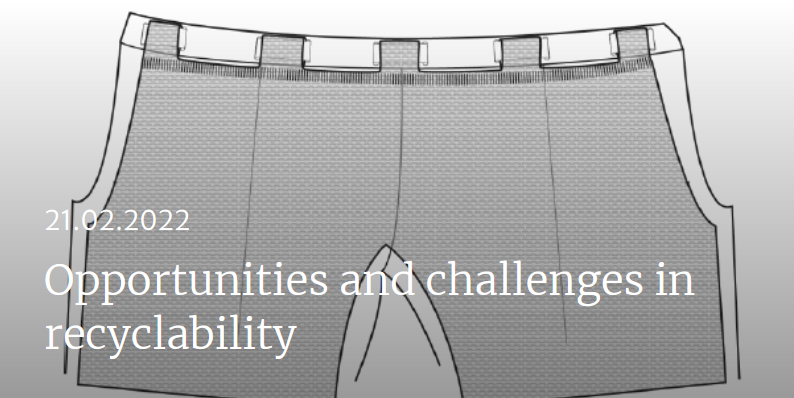

An effective and collaborative cooperation between purchasing companies and suppliers is crucial to protect the rights of workers in the supply chain. The COVID-19 crisis has once again shown this particularly clearly. With the 2021 annual topic, we wanted to contribute to the industry-wide improvement of purchasing practices and to create space for progress towards good working conditions and living wages.
Purchasing practices describe all the principles and processes that brands and retailers use to interact and do business with the manufacturers who deliver their products. Responsible purchasing practices enable suppliers to effectively plan their production and working hours and pay workers fairly. At the same time, they allow suppliers to invest in the overall improvement of working conditions. In this way, they strengthen resilience in the supply chain.
Diverse activites
In order to support its members on the subject of purchasing practices, the Textiles Partnership has created various offers in 2021. Here are a few examples:
Since January 2021, basic training in video format in German and English has been available, in which companies will learn, among other things, how their actions can affect workers in the supply chain, what impact price pressure has on the wages of workers in the supply chain and how they can contribute to better working conditions in the supply chain through responsible purchasing practices.
Furthermore, with the Living Wage Lab, the Partnership Initiative Living Wages has entered a new phase. The aim of the Living Wage Lab is to support Partnership members in the development and implementation of individual strategies for living wages and to develop scalable solutions together with suppliers. 17 Partnership members participate in the Living Wage Lab. They also commit to analysing and working on their purchasing practices.
As in 2020, companies were able to use the Purchasing Practices Self-Assessment (PPSA). New in 2021 was the questionnaire for feedback from partners in the supply chain such as importers, agents, suppliers and producers. Based on this Purchasing Practices Assessment (PPA), they were able to critically evaluate the purchasing behavior of their business partners. 48 members of the Textiles Partnership and signatories of the Dutch Agreement on Sustainable Garments and Textile analysed their own purchasing practices and obtained feedback from their suppliers.
In addition, the Partnership for Sustainable Textiles, together with other multi-stakeholder initiatives, is involved in the development of a Common Framework for Responsible Purchasing Practices (CFRPP). The framework is intended to address businesses and multi-stakeholder initiatives alike and serve as a guide to improve purchasing practices.
Further information on these activities can be found in the news articles linked below. More activities and details on our annual topics can be found here, including the “Advanced Training” together with Thrive and the side session at the OECD Forum, which provided information on the CFRPP.
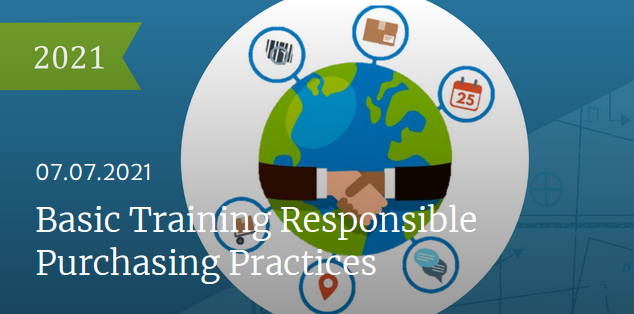

News
Living Wage Lab
The Living Wage Labs is intended to support Partnership members in the development and implementation of individual strategies for living wages.
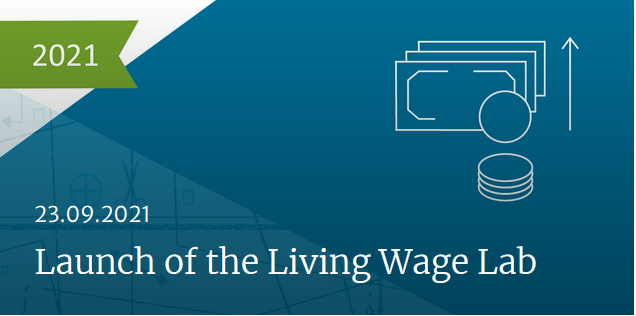

News
PPA and PPSA
48 companies analysed their purchasing practices and gathered feedback from their suppliers.
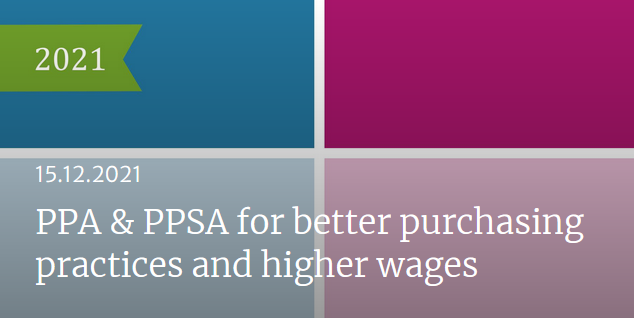

News
Common Framework for Responsible Purchasing Practices
The CFRPP is aimed at companies and multi-stakeholder initiatives and serves as a guide to improving purchasing practices.
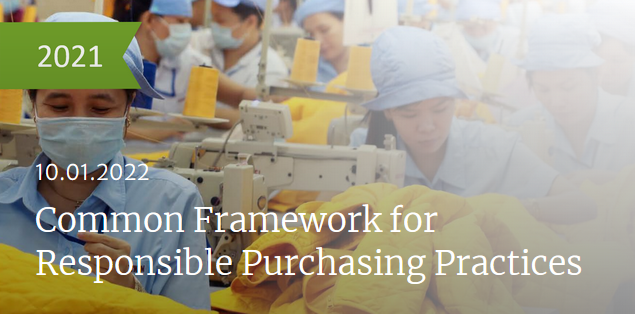

Lindita Xhaferi-Salihu leads work on sectors engagement in climate action as part of UN Climate Change wider Global Climate Action work. She led development of both Sports for Climate Action and Fashion Industry Charter for Climate Action and works closely with a variety of stakeholders to mobilize key actors and catalyze ambitious action towards decarbonization. Before joining UN Climate Change, Lindita worked in public relations and coordinated projects promoting multi-stakeholder engagement in policy and sustainability. Lindita has an educational background in engineering, international relations and global energy & climate policy.


Climate transition is a risk, but also an opportunity
With each subsequent report from the Intergovernmental Panel on Climate Change, we are witnessing the mainstream scientific consensus on the issue becoming stronger, the threat to humanity more severe, and the call to action more urgent. The science keeps telling us again that it’s crucially important that we go all in on climate action, collaborating across both business and government. We need to do it now because the window of time to stabilize the climate is disappearing fast. Unless there are immediate and large-scale reductions, limiting global warming to 1.5 degree will be beyond our reach.
Through our engagement with the fashion sector via Fashion Industry Charter, we have witnessed over these last three years that that many organizations in the sector have ramped up climate action work. For example, more and more companies are focusing on energy efficiency, renewable energy, and low-carbon logistics. Others have set up low-carbon material targets and have embraced circularity and regenerative agriculture. We see a lot of innovation in the sector but at the same time we should recognize that action is not happening at scale and actions by individual actors is insufficient to move the needle.
To truly make the transformative change we need, more needs to happen. This transition requires huge leaps in energy efficiency, renewable electricity generation and the creation of cutting-edge technologies. Solutions are on the rise and opportunities exist now for companies to save energy and materials costs, serve new customer needs, enhance their reputations and better attract and retain talent. Companies should consider all available tools and apply those that best work for them.
This transition also means that we need to look at a mutually-reinforcing intersection between all involved stakeholders – an inclusive multilateralism – to address the challenge of climate change, as perhaps the only chance we have, to drive ambition leading to both implementation of the Paris Agreement and the SDGs.
We need more of the industry to actively and meaningfully participate and engage and be bold in their deliberations. Changing business as usual in line with scientific consensus isn’t going to be easy – it isn’t easy for any organization – but it’s absolutely necessary.
Let’s remember, climate transition is a risk, but also an opportunity. As all transitions go, this one costs money. Money that will ultimately bring return. Good news is finance is increasingly on it and the opportunities to finance decarbonization grow fast – even in industries that are hard to decarbonize. Companies that have a plan to move forward in a low carbon and resilient way will be better positioned to attract financing. Fashion Industry needs to seize this opportunity.
Climate Change is not a competitive issue and is too big of a problem to be solved by anyone on their own. You have many ways to get engaged: the industry led Fashion Industry Charter for Climate Action is one of these avenues. We value our partnership with the Fashion industry but we also demand much from it. We are also grateful for the support of many organizations such as Partnership for Sustainable Textiles who have actively contributed to the programme of the Charter with capacity building projects.
This sector can do so much to not only take direct climate action but influence the action of others. The Paris Agreement shows that we, as a people, as humanity, should and can work together towards positive change. But we must all work together to make it happen – in all parts of society and in all parts of the world for the benefit of all people for generations to come.
Sector risk Climate and GHG Emissions
On its website, the Partnership for Sustainable Textiles provides information on all eleven sector risks. Details on the sector risk climate and greenhouse gas emissions can be found here.
And what else happened in 2021?
In addition to the activities in the four fields of work and on the various topics of the Textiles Partnership, there are many more newsworthy items every year than space in the annual report. However, we do not want to withhold a few selected points from you and have therefore put them together at this point – last but not least.
In addition to the activities in the various fields of work and topics of the Partnership for Sustainable Textiles, there is much more worthy mentioning each year than there is space for in the annual report. Last but not least, we would like to spotlight a few points here.
Changes in the Steering Committee
The Steering Committee (SC) is the highest decision-making body in the Textiles Partnership. In spring 2021, members of the various stakeholder groups were able to elect their representatives for the SC. Ten of the twelve SC members were re-elected. Johannes Merck (Otto Group) and Sabine Ferenschild (Südwind) did not run again for the Steering Committee. As a result, Tobias Wollermann (Otto Group) and Alexandra Caterbow (hej support) joined the Steering Committee as new members. In the course of the year, the representative of the Federal Ministry of Labour and Social Affairs (BMAS) changed: Olaf Seiring was succeeded by Moritz Blanke.
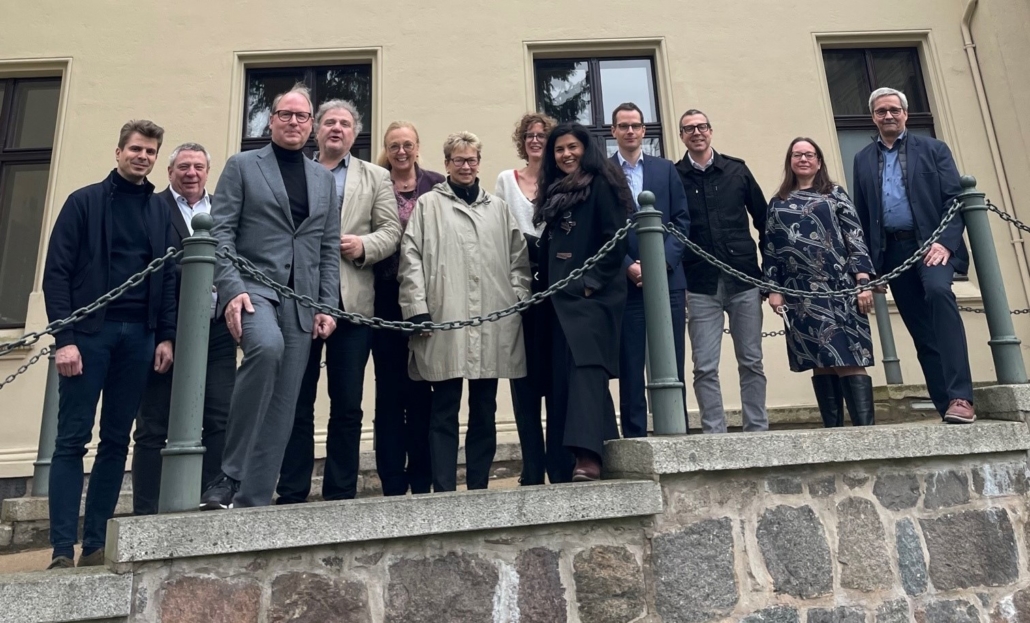

From left: Nico Kemmler, Uwe Mazura, Stephan Genth, Berndt Hinzmann, Annette Seidl, Gisela Burckhardt, Franziska Dormann, Anosha Wahidi, Moritz Blanke, Ingo Strube, Alexandra Caterbow, Frank Zach
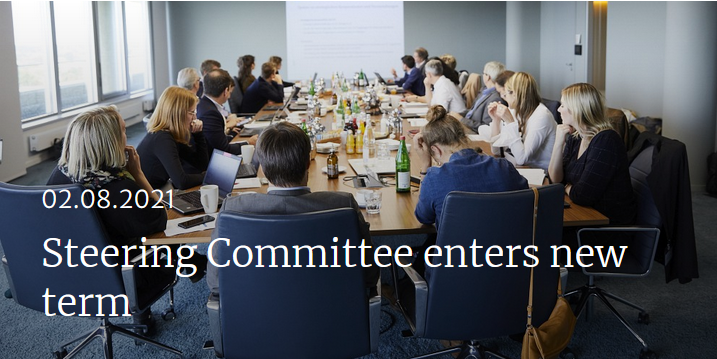

Working Meeting 2021
The Working Meeting took place on 27 October 2021 as a hybrid event. At the KOMED in Cologne, around 60 representatives of the Partnership members met, in addition, up to 30 people took part in the workshops online and two sessions in the plenum.
Excerpts from the program of the Working Meeting:
- Jürgen Janssen, Head of the Partnership Secretariat, spoke about experiences and expectations in this year’s Review Process.
- Welcoming address by the Acting Parliamentary State Secretary of the BMZ, Dr Maria Flachsbarth:
“If we hadn’t invented the Textiles Partnership in 2014, we wouldn’t be where we are today. We have made good progress together, have recognized the necessities and signs of the times and are therefore further along in the textile sector than in other industries.” - 6 workshops on gender-based violence, climate protection, purchasing practices, supply chain transparency and sustainable public procurement, among others.
- Panel with Jorge Conesa (Policy Manager at Fair Trade Advocacy Office) and Baptiste Carriere-Pradal (Chair of the Policy Hub) on developments at EU level.
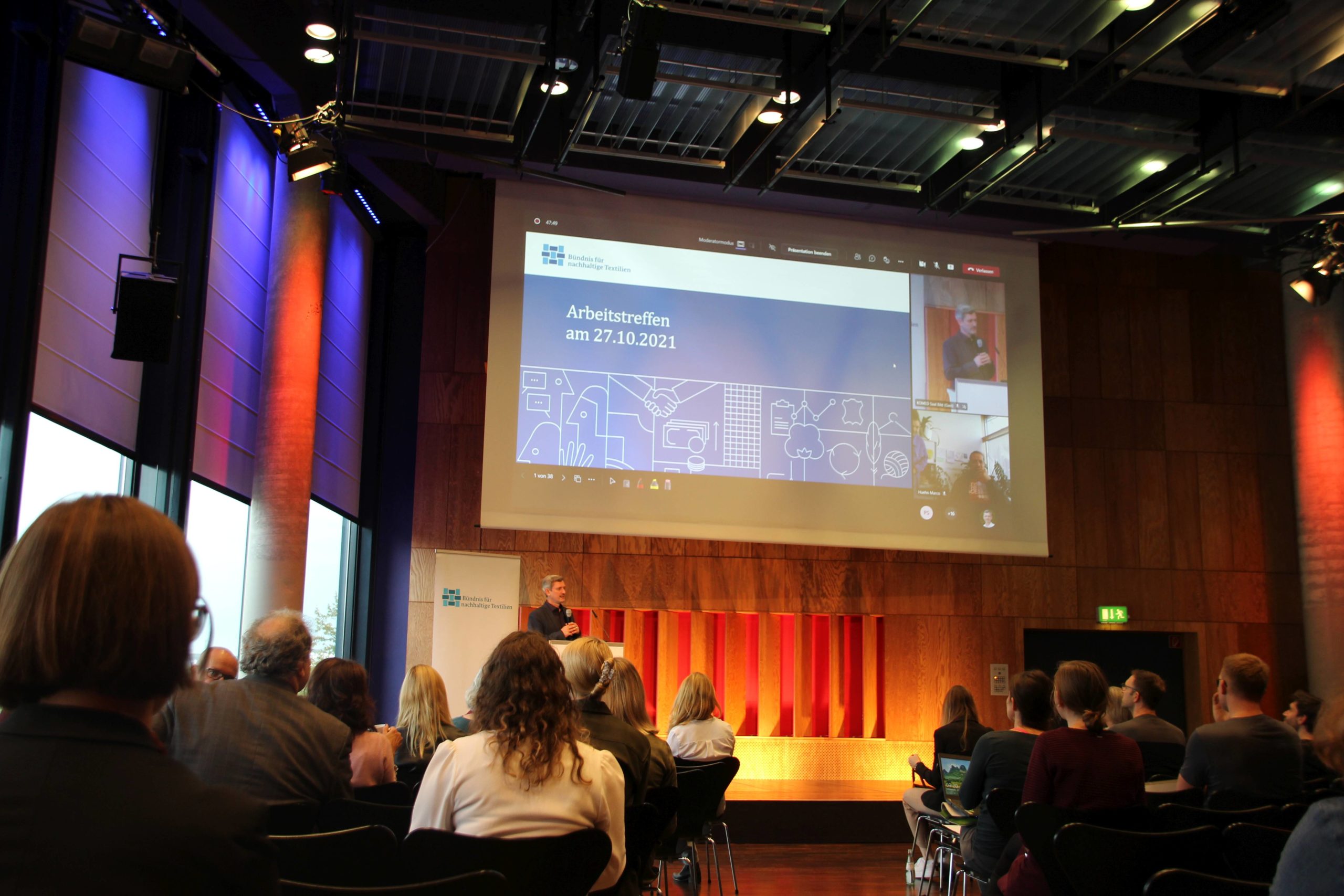
Jürgen Janssen during his welcome address
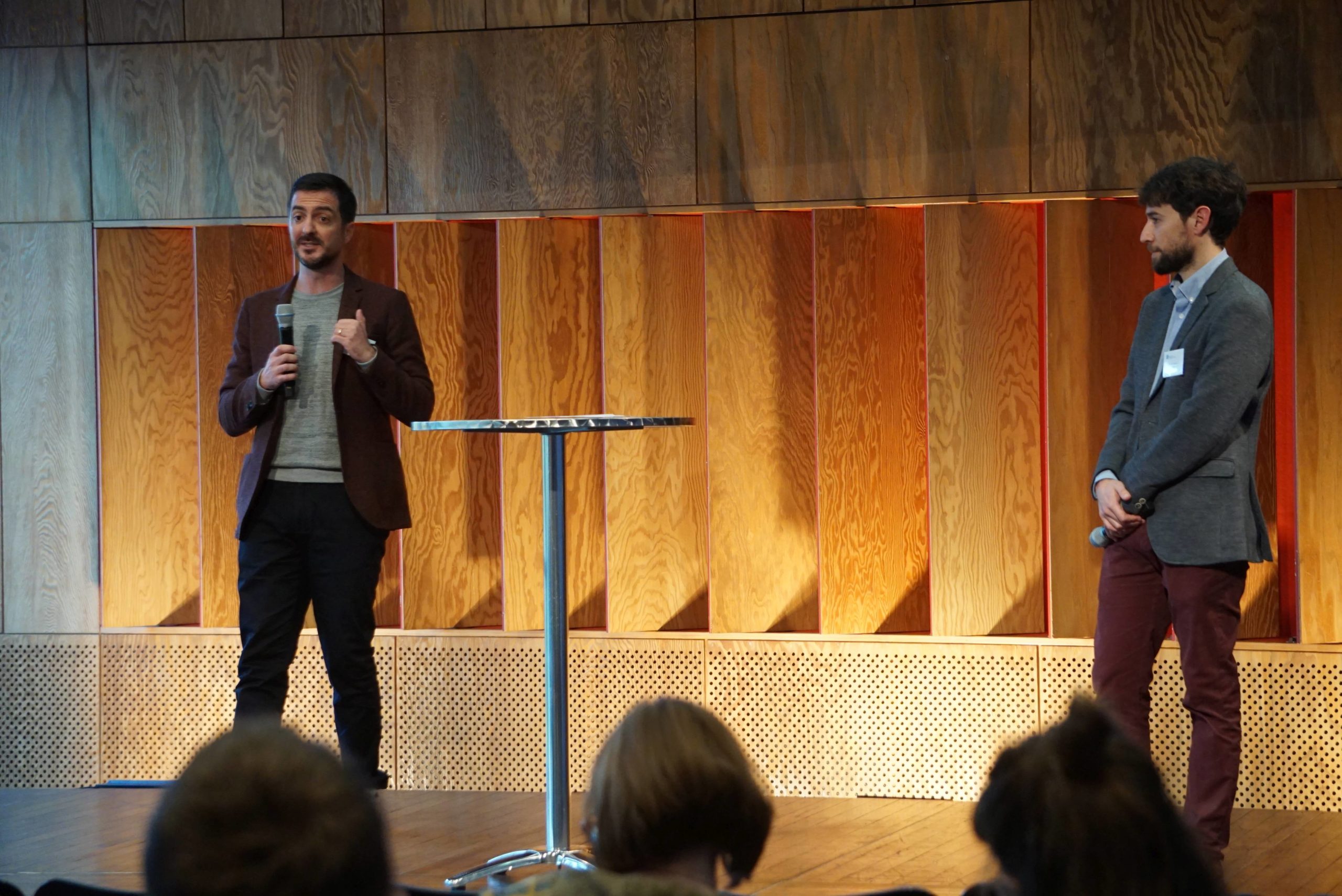
Panel with Baptiste Carriere-Pradal and Jorge Conesa
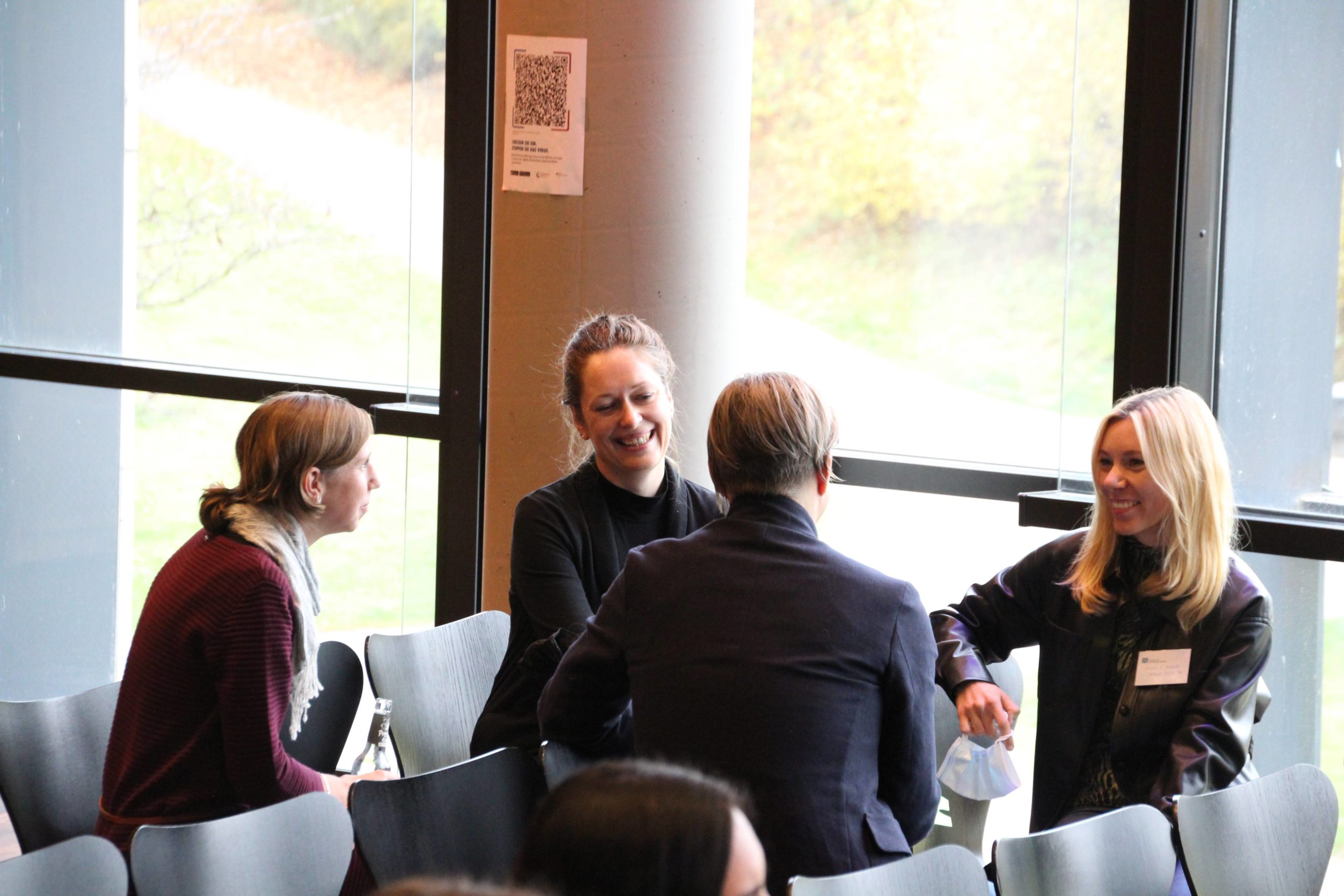
Group work on dialogue in the Partnership
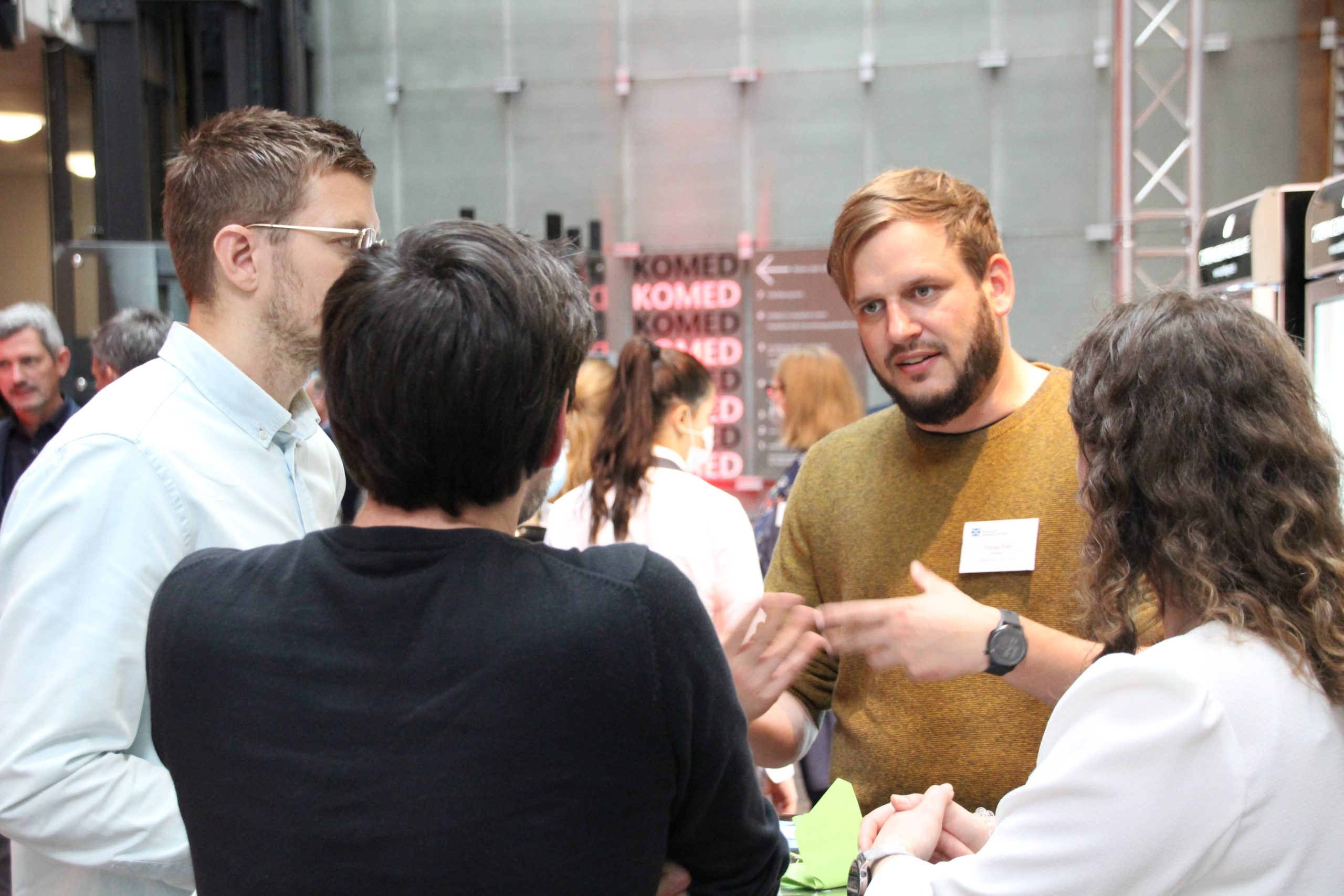
Exchange and networking in the Textiles Partnership
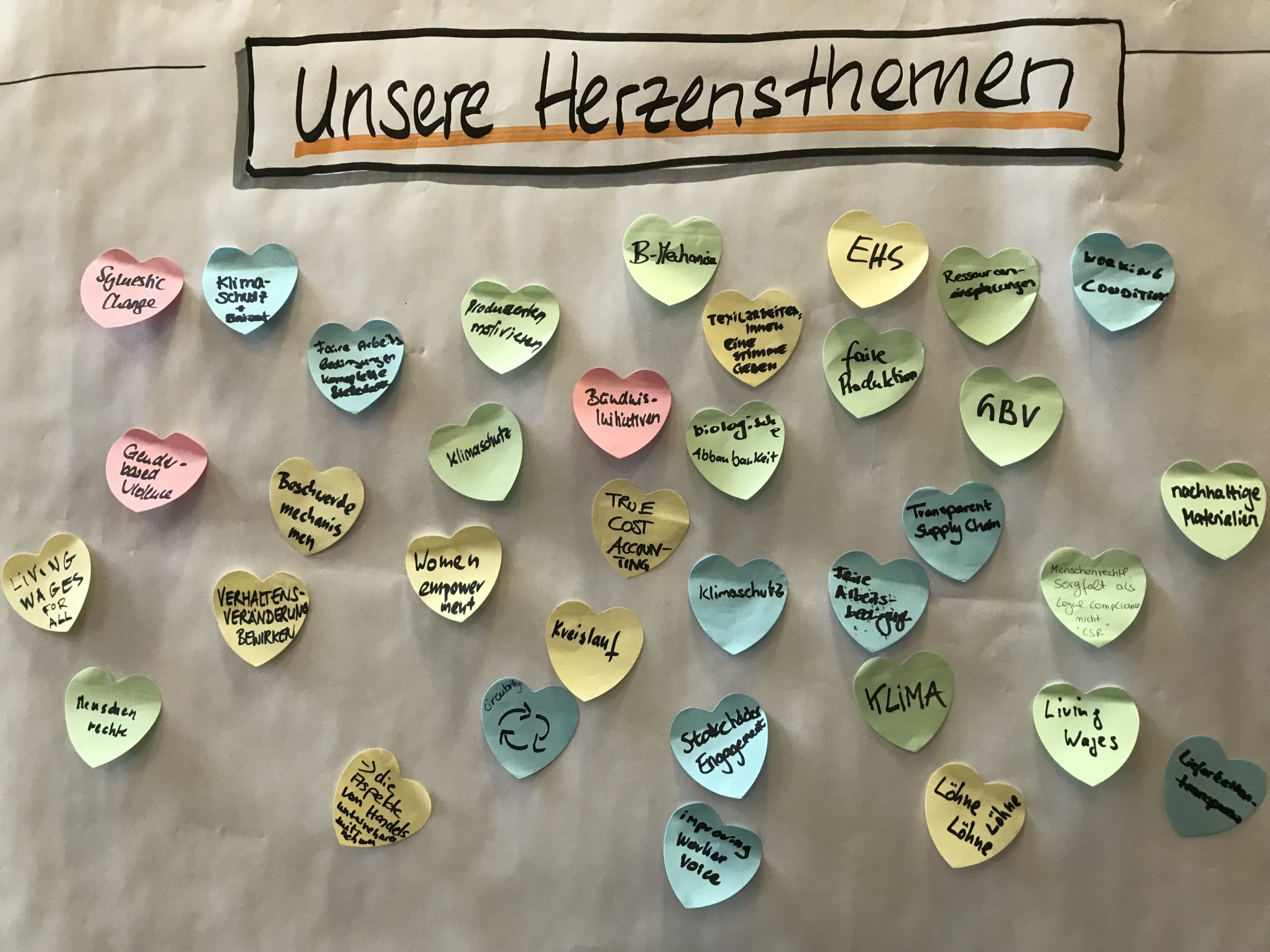
This is important to the members
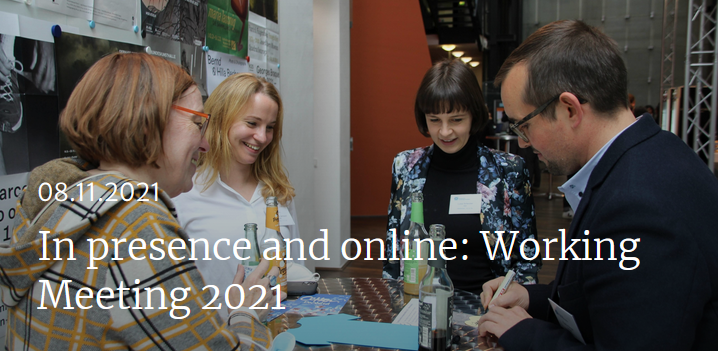

Improvements on the website
The website is the central information channel about the Textiles Partnership. In 2021, we revised the page structure so that users can better navigate and find information faster.
For example, the Topics section has also been expanded, which now contains information on all eleven sector risks and presents the respective activities of the Partnership.
You can still read under News what is currently happening in the Textiles Partnership and which new members have joined.
Our contribution to the Sustainable Development Goals
With its diverse activities, the members and the Textiles Partnership as a whole contribute to the 2030 Agenda and the Sustainable Development Goals (SDGs). In 2021, we updated our SDG mapping and integrated two more SDGs with SDG 13 (climate action) and SDG 14 (life below water).
News
German Sustainability Strategy
The Textiles Partnership and its members not only contribute to the SDGs, but also to four transformation areas of the German Sustainable Development Strategy.
